Half wall paneling quietly does two jobs at once: it defends high-traffic walls from scuffs and splashes while giving rooms an architect-designed finish that simple paint can’t match. Design editors point out that the lower portion of a wall is the spot our eyes meet first when we walk into a space, so dressing it with character-rich texture—whether beadboard, shiplap, tile, or sleek slats—instantly lifts the whole room without the cost of floor-to-ceiling treatments. The Spruce Livingetc From traditional craftsman homes to ultra-modern lofts, the right half wall paneling idea can correct awkward proportions, hide wiring, double as storage, and even improve acoustics. Ready to see how twenty distinct approaches can work in real life? Let’s explore.
1. Cottage-Fresh Beadboard Half Wall Paneling

A crisp beadboard half wall paneling treatment brings old-world charm and wipe-clean practicality to kitchens, laundry rooms, and breezy porches. Design pros note that the evenly spaced grooves bounce light around a room, making tight spaces feel wider while disguising dings at chair-back height. The Spruce Choose moisture-resistant MDF or PVC boards, run them about one-third up the wall, and top with a chunky ledge for mugs, art, or small plants. A satin enamel in a soft white or gentle coastal hue holds up against steam and splatters; just ensure you caulk seams before painting to seal out moisture. Finish with simple Shaker hooks for a space-saving coat rack that feels built-in rather than added-on.
2. Clean-Lined Board-and-Batten Half Wall Paneling
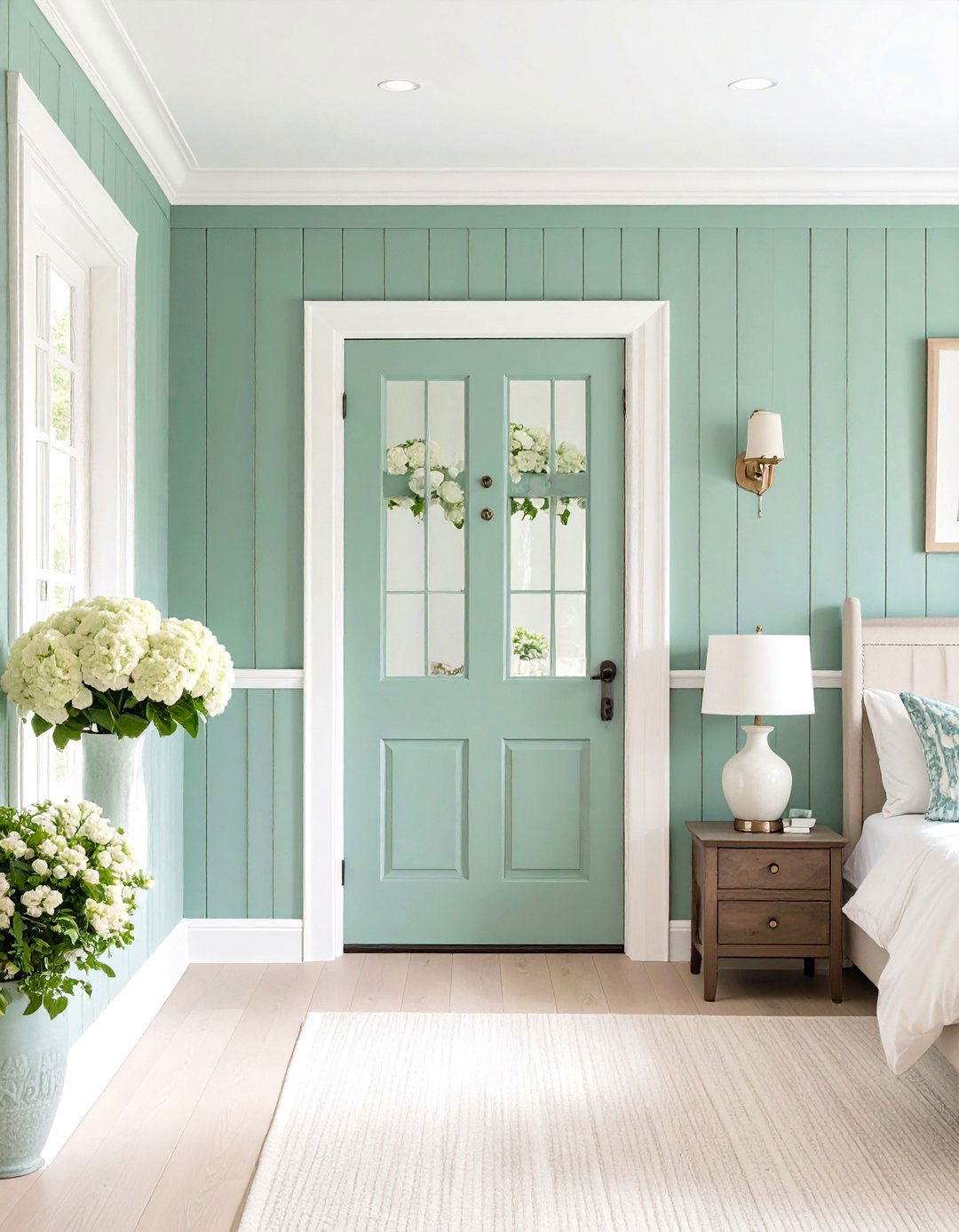
For transitional bedrooms or foyers, board-and-batten half wall paneling delivers a carpenter’s look with little math. DIY tutorials show how one-by-three vertical battens spaced 12–16 inches apart and capped with a horizontal rail create strong shadow lines that hide uneven plaster walls. The Spruce YouTube Paint the assembly one bold color—sage, charcoal, or dusty blush—for instant depth and a gallery-style backdrop that makes framed art pop. Keep baseboards and the new top rail the same thickness so the system appears original. This method excels in rental refreshes because battens can be installed with construction adhesive and brad nails, then removed with minimal repair when you move.
3. Vertical Shiplap Half Wall Paneling for Lofty Ceilings
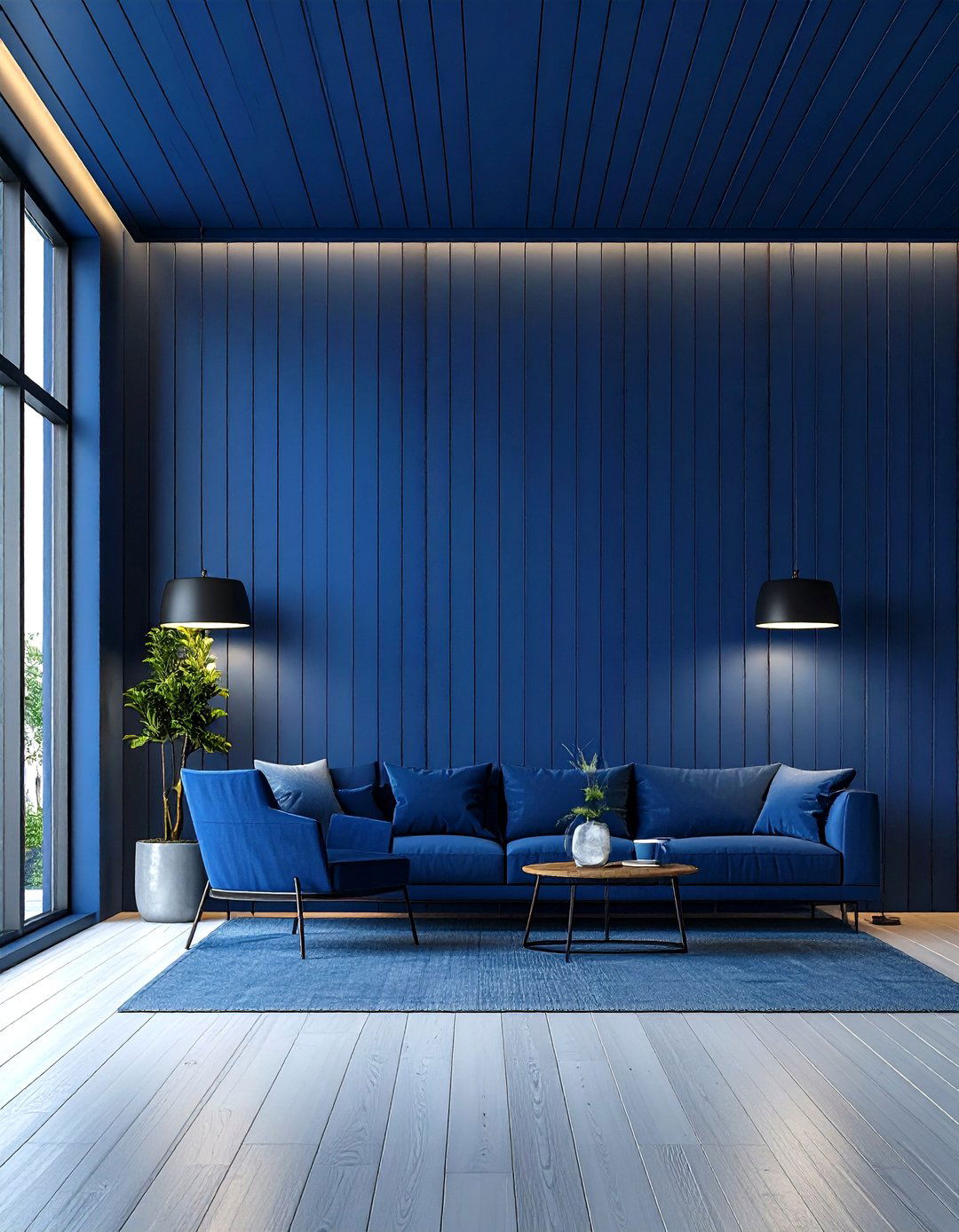
Looking to stretch a room upward? Vertical shiplap half wall paneling tricks the eye by directing sightlines to the ceiling. Designers favor narrow, nickel-gap planks finished in eggshell white for Scandinavian airiness or in midnight blue for dramatic contrast with pale walls above. The Spruce Because only the bottom portion is clad, you still have the freedom to hang wallpaper or large artwork above without the busy horizontal lines of full-height shiplap. Seal the top edge with cove molding to keep dust out of grooves, and consider pairing with sleek wall sconces to reinforce the linear rhythm and add cozy evening light.
4. Supersized Shiplap Half Wall Paneling for Grand Halls
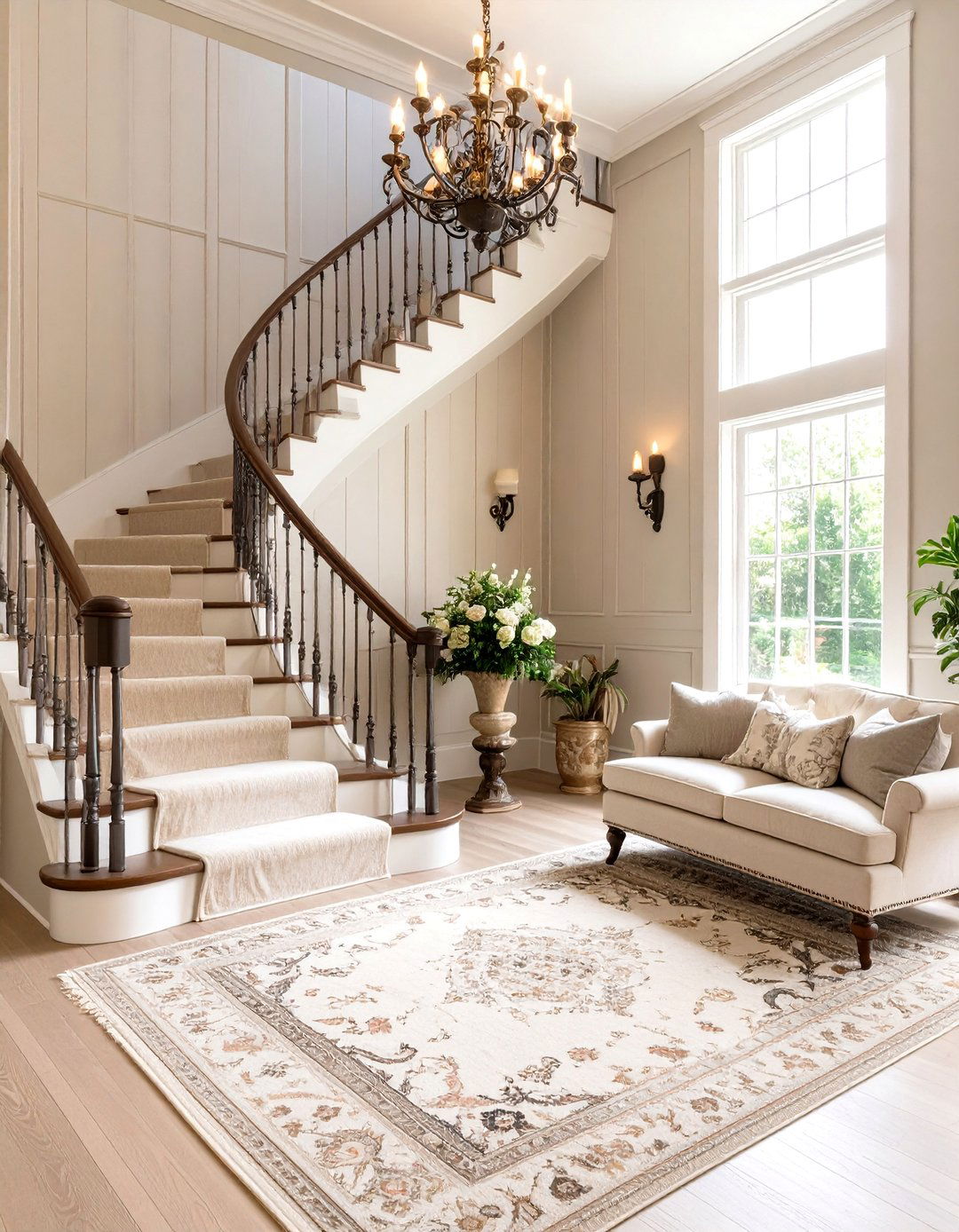
Unlike standard one-by-eight boards, oversize shiplap planks—sometimes 10 inches or more—deliver modern farmhouse drama in open stairwells or double-height entries. The Spruce Running giant grooves two-thirds up the wall visually lowers soaring ceilings so the space feels welcoming instead of cavernous. Use plywood ripped into wide strips, prime all sides to prevent warping, and leave a generous ⅛-inch nickel gap for crisp shadows. A muted taupe or greige keeps the look sophisticated. Pair with wrought-iron railings and a vintage runner for a timeless mix of rustic and refined.
5. Picture-Frame Molding Half Wall Paneling for Gallery Elegance

Art lovers gravitate toward half wall paneling built with picture-frame boxes because the even rectangles echo gallery frames above. Craft each box from one-inch trim, spacing them evenly across the wall’s width and height for a rhythm that feels intentional. Pinterest Paint both molding and infill in the same satin color for subtle relief, or highlight the frames with a slightly deeper shade for a shadow-box effect. A slim chair-rail cap finishes the transition to plain wall, allowing bold wallpaper or curated photo collections to steal the spotlight without visual clutter below.
6. DIY Geometric Wainscoting Half Wall Paneling

For maximalists, half wall paneling can get playful: bloggers have created diamond, herringbone, or intersecting-line patterns using inexpensive lattice strips. The Spruce Map the design with painter’s tape first, then secure strips using a pin nailer. Because the geometry is concentrated on the lower half, you avoid overwhelming the room while still adding custom artistry. Stick to one paint color—perhaps a moody teal—to unify the pattern and let the angles cast dynamic shadows that change with daylight.
7. Color-Drenched Half Wall Paneling That Steals the Scene
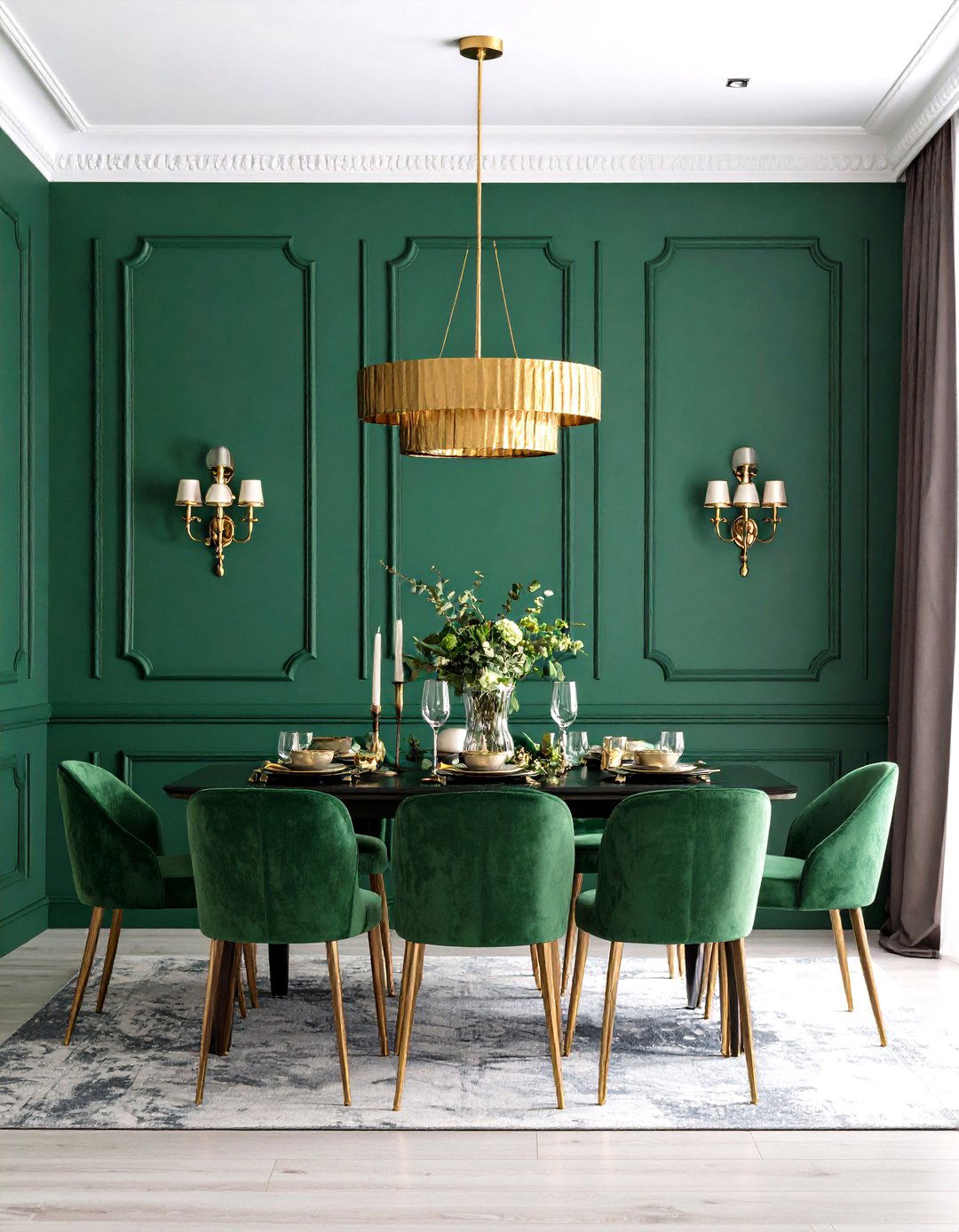
Surprisingly, a saturated raspberry, emerald, or currant shade on half wall paneling can ground a room and make lighter wallpaper or ceiling paint feel intentional. Designers recommend choosing a hue found in upholstery or drapes for cohesion, then finishing crown, base, and chair rails in the same color to envelop the space. The Spruce Because the tone stops below eye level, it reads bold rather than overwhelming—perfect for dining rooms or chic nursery corners. Add brass hardware or cane seating for warmth against the deep backdrop.
8. Two-Tone Half Wall Paneling with Wallpaper Above
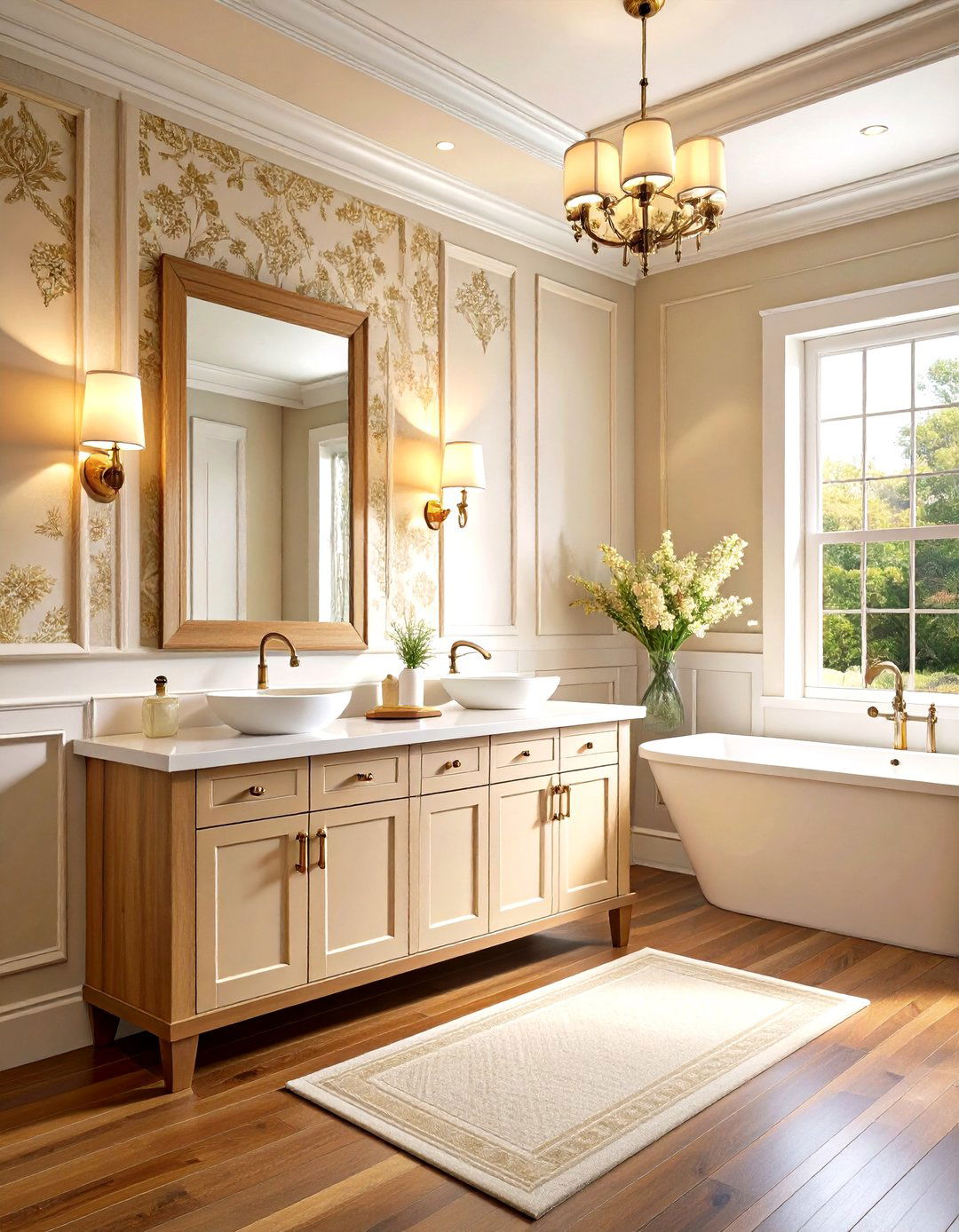
Classic wainscoting topped with patterned wallpaper remains a designer favorite for foyers and powder rooms because the sturdy paneling protects against bags and traffic while the print adds personality. The Spruce The Spruce Keep paneling neutral—think warm white or creamy almond—so busy patterns shine. A picture-rail cap keeps wallpaper edges neat; use clear caulk where panel meets paper to block moisture in bathrooms. The result feels like a tailored suit with a fun pocket square: restrained yet memorable.
9. Natural Wood Slat Half Wall Paneling for Acoustic Calm
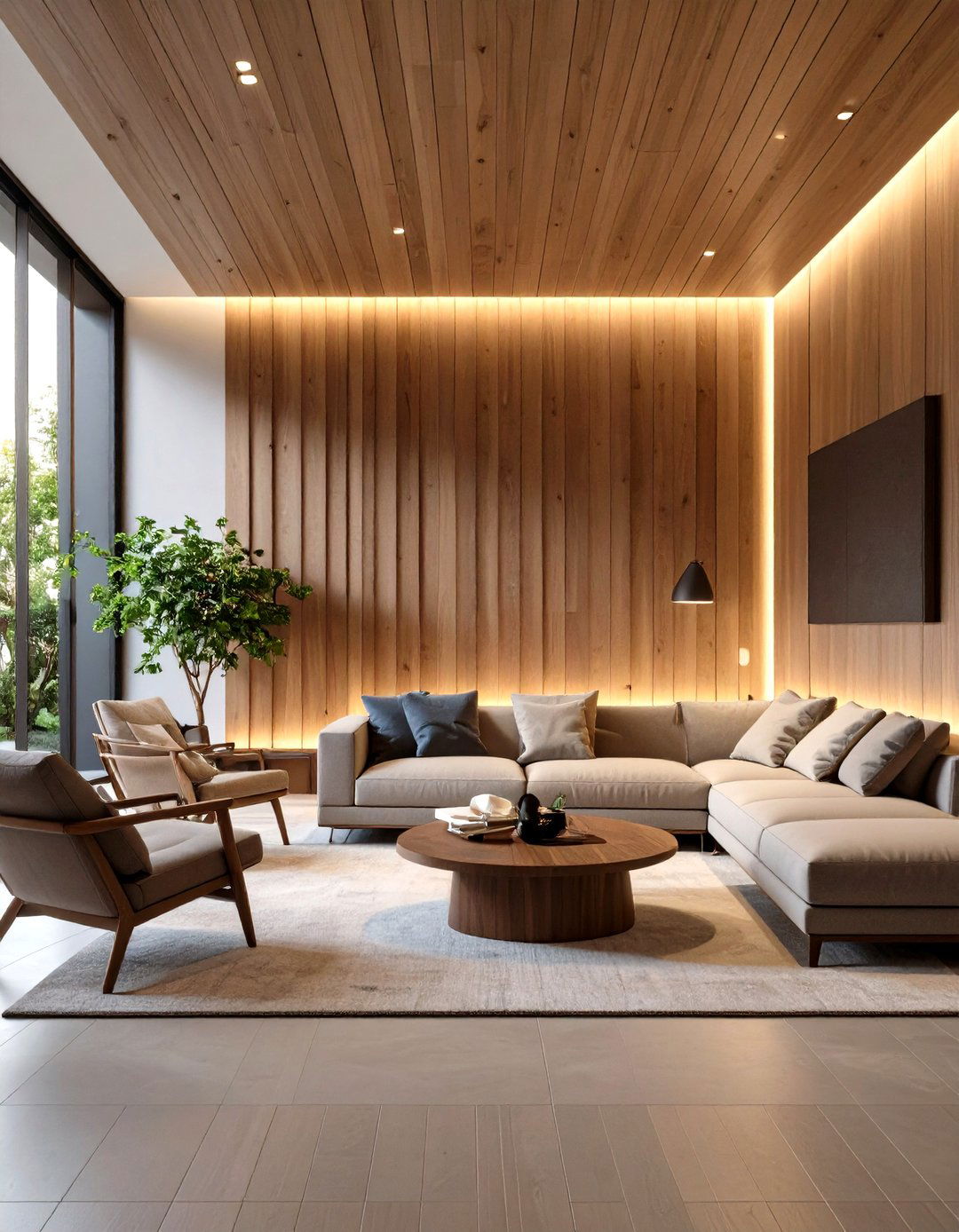
Open-plan living areas often struggle with echoes, and that’s where acoustic slat half wall paneling excels. Pre-finished oak or walnut panels backed with felt absorb sound while turning a plain wall into a luxe focal point. The Wood Veneer Hub Install the slats horizontally to widen a narrow hall or vertically for height; either way, the half-height version keeps costs down and leaves space above for shelving. LED strip lights tucked under the top rail highlight the wood grain and provide subtle mood lighting.
10. Fluted Wood Half Wall Paneling for Subtle Texture
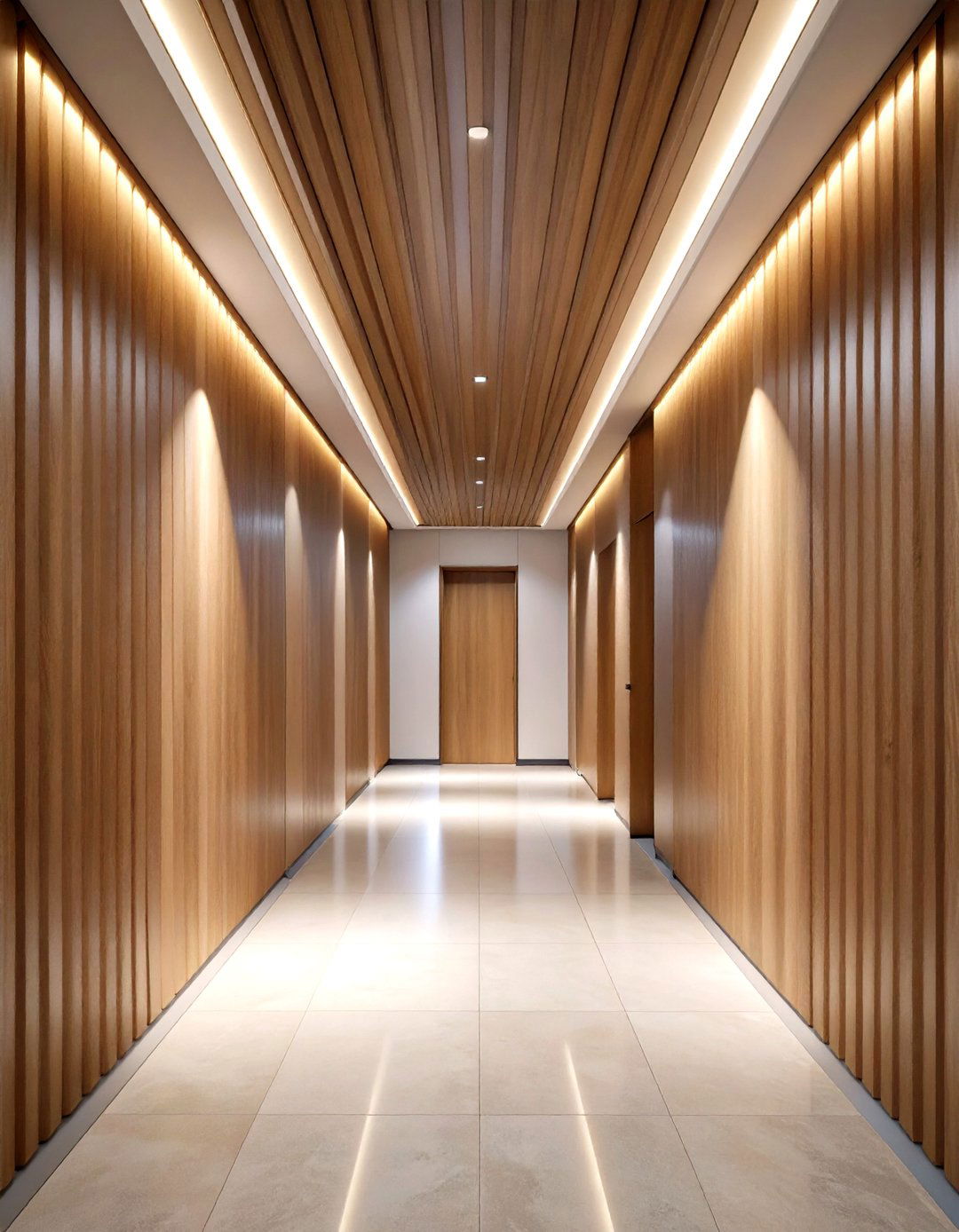
If you love clean lines but crave subtle depth, fluted wood half wall paneling offers gentle scallops that catch light without busy joinery. Flexible MDF or veneer panels arrive ready to paint, making curved corners and wrapping islands a breeze. Andor Willow Brushed-on matte paint mutes the texture for a contemporary hotel-lobby vibe, while a clear oak varnish brings mid-century warmth. Finish with a pencil-thin metal reveal at the top for a sophisticated material break between panels and drywall.
11. Corrugated Metal Half Wall Paneling for Industrial Edge
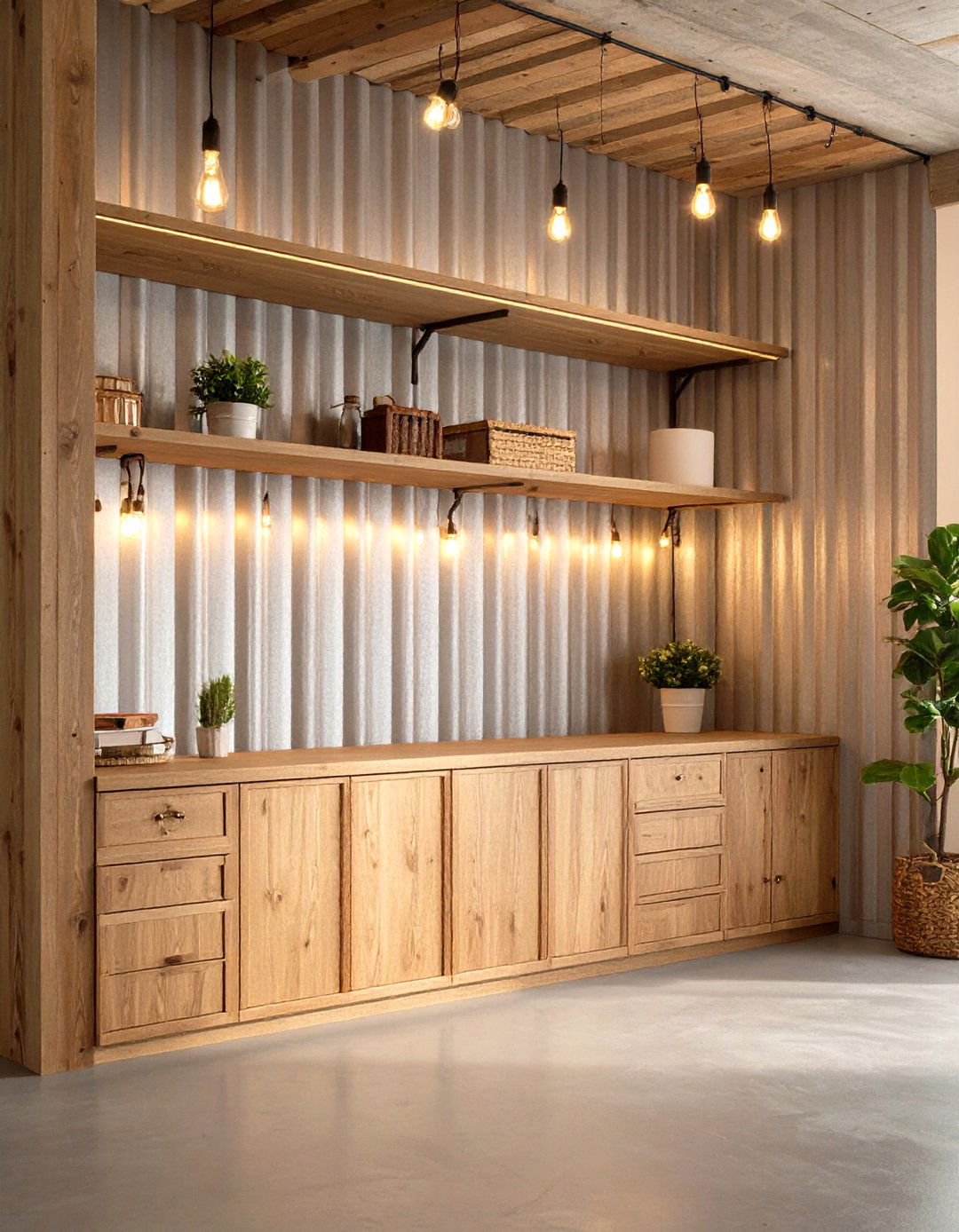
In mudrooms or basement bars, corrugated metal half wall paneling resists heavy wear and wipes down with a sponge—ideal where kids kick off cleats or where drinks may splash. Suppliers offer pre-rusted or galvanized sheets cut to 36 inch heights that install like wainscot. Dakota Tin For safety, cap sharp upper edges with a stained wood ledge that doubles as a drink shelf. Pair with concrete floors and Edison bulbs for a loft-inspired look that costs less than many wood options.
12. Tile Wainscoting Half Wall Paneling for Spa-Proof Bath Walls
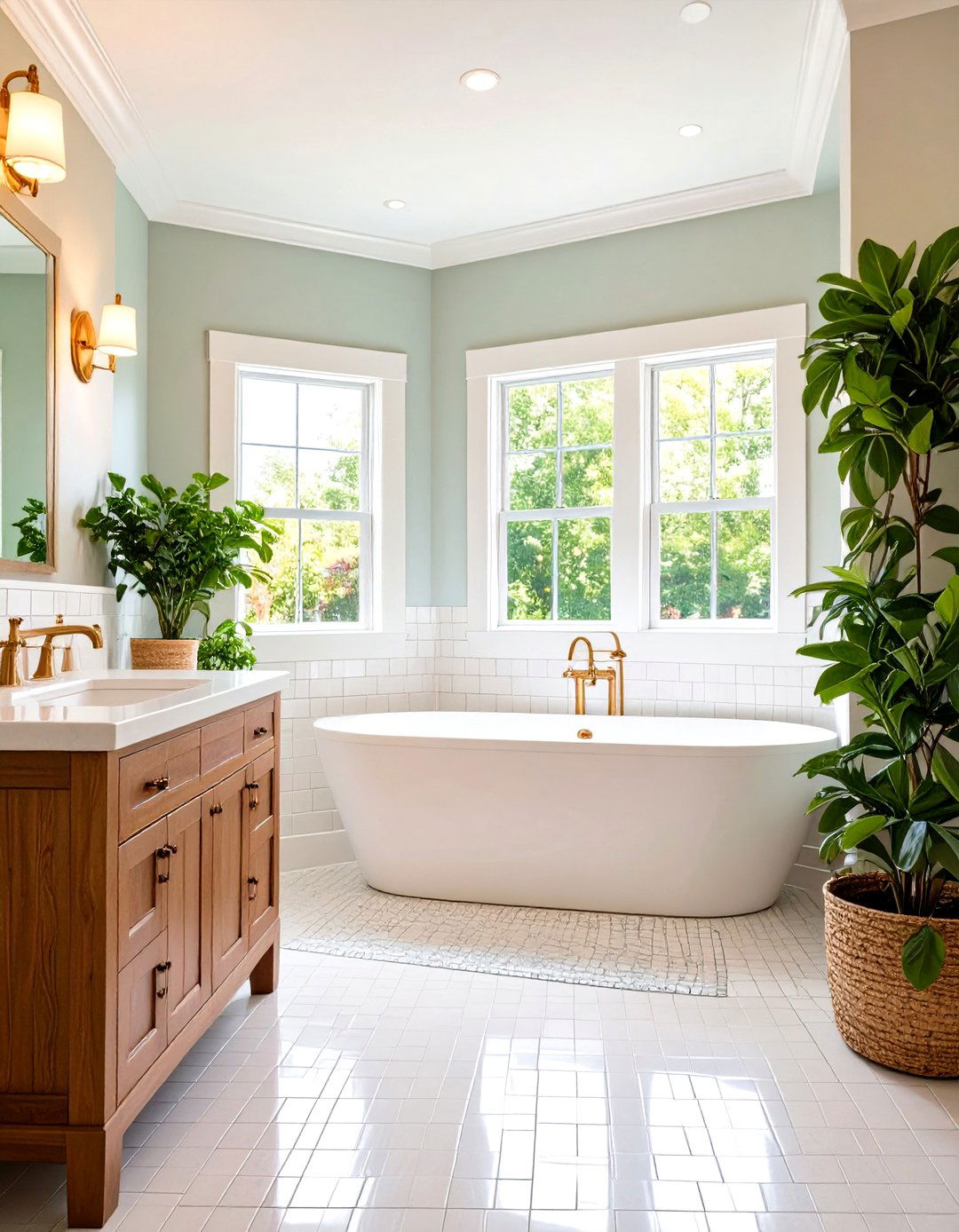
Half-tiled bathrooms are trending because they blend the easy cleaning of full tile with the softness of painted drywall above. Interior journalists advise tiling wet zones or the lower three feet around the room, then topping with water-resistant paint or wallpaper. Livingetc A slim pencil tile or metal trim finishes the edge cleanly. Subway, zellige, or checkerboard patterns let you experiment without tiling ceilings, which keeps budgets manageable while protecting against daily splashes and steam.
13. Peg-Rail Shiplap Half Wall Paneling for Hard-Working Laundries
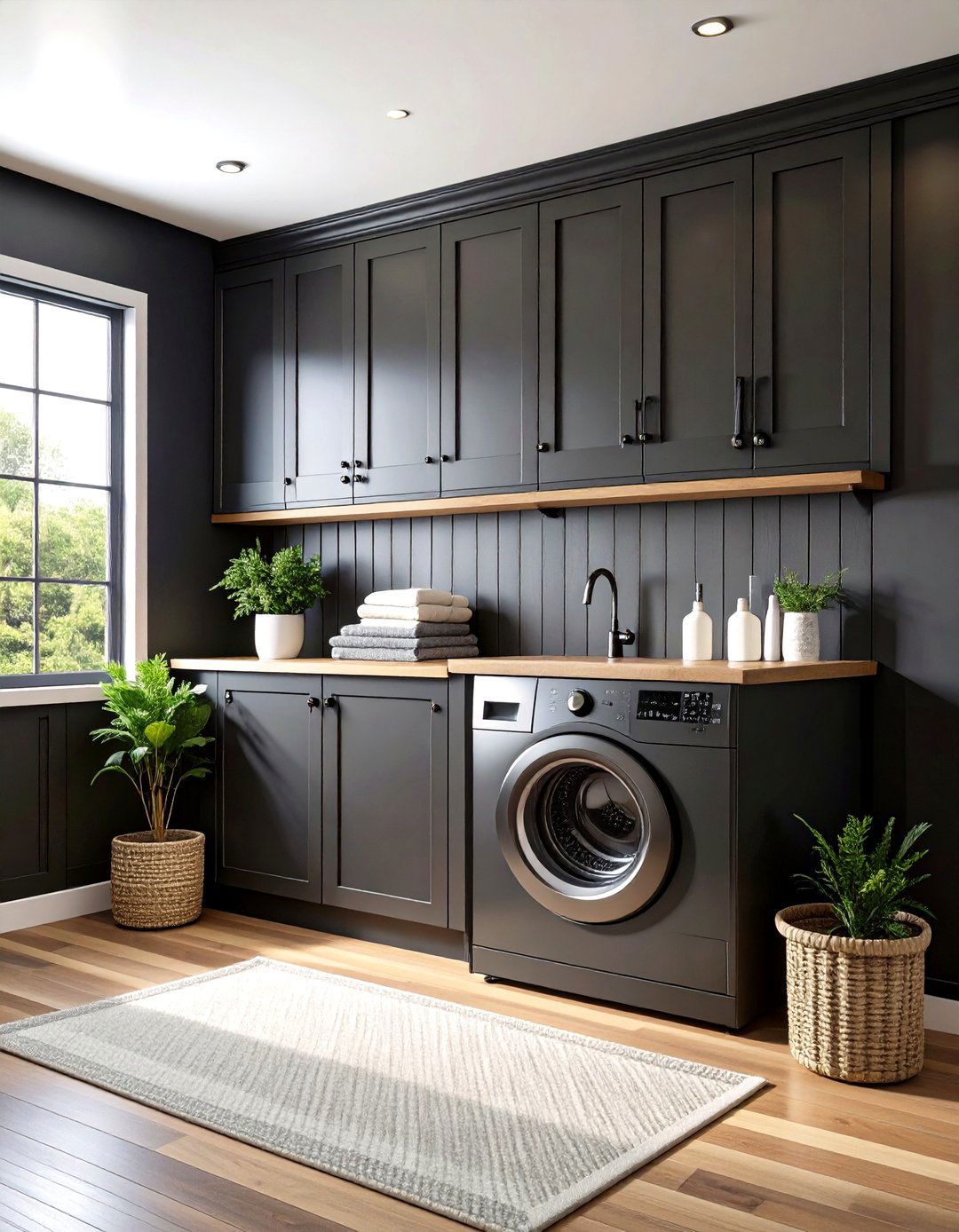
Black shiplap half wall paneling fitted with a simple peg rail turns a laundry or mudroom into a multitasking hub—hang drying rods, tote bags, or cleaning brushes right where you need them. The Spruce Because the lower wall is already durable wood, damp shirts won’t mark drywall. Run the rail an inch below the panel’s top cap so pegs sit proud of any shelf you might add later. Finish pegs in the same color for a streamlined, built-in look.
14. Staircase Continuation Half Wall Paneling for Flow
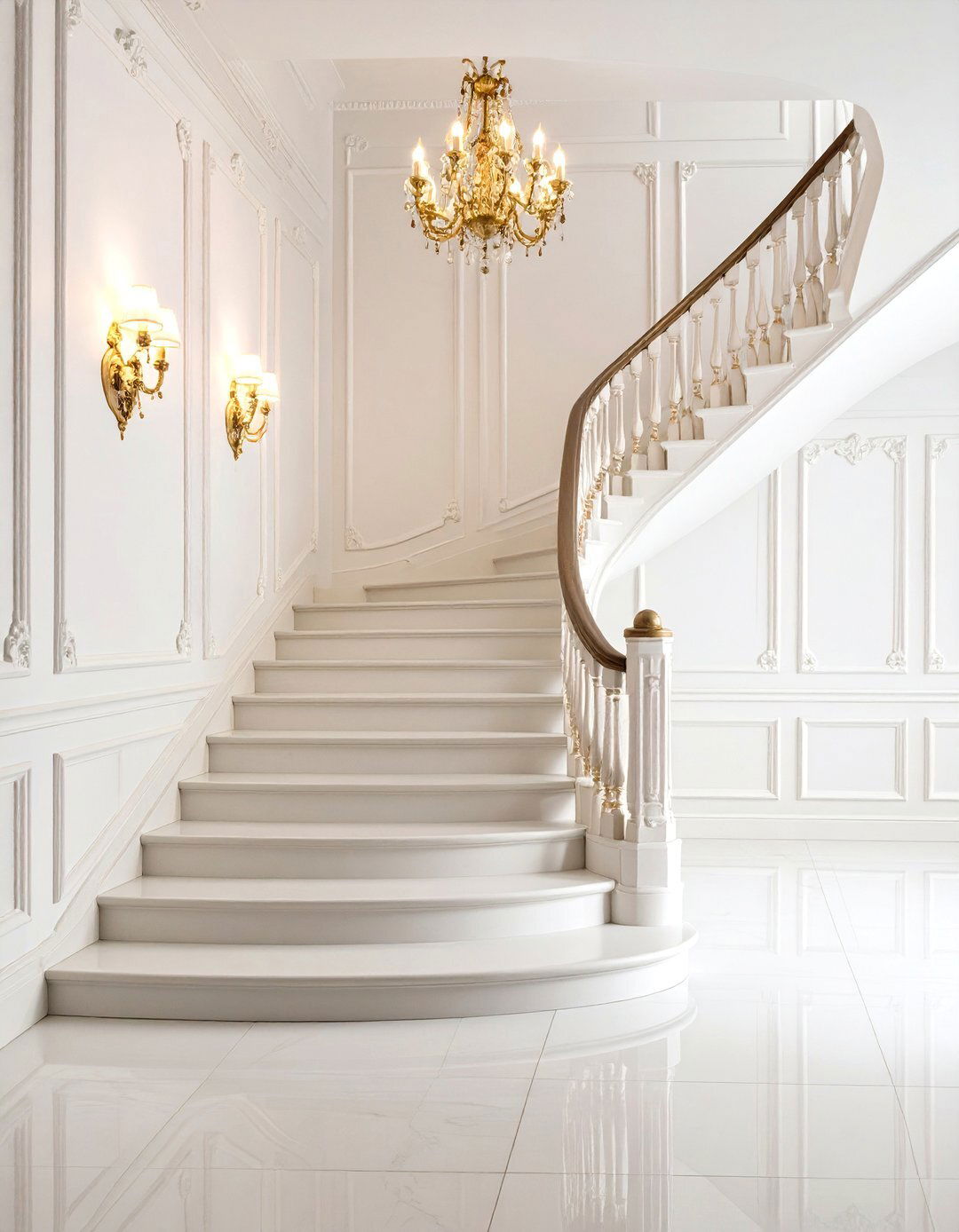
Carrying half wall paneling from an entry up the first flight of stairs unifies levels and masks scuffs from passing suitcases. Victorian-inspired remodels often align the panel’s top rail with the stair stringer for a pleasing diagonal. The Spruce Matching paint on handrails and panels ties the architecture together, while wall above can stay light to prevent dark, tunnel-like stairs.
15. Grasscloth-Inset Half Wall Paneling for Luxe Contrast
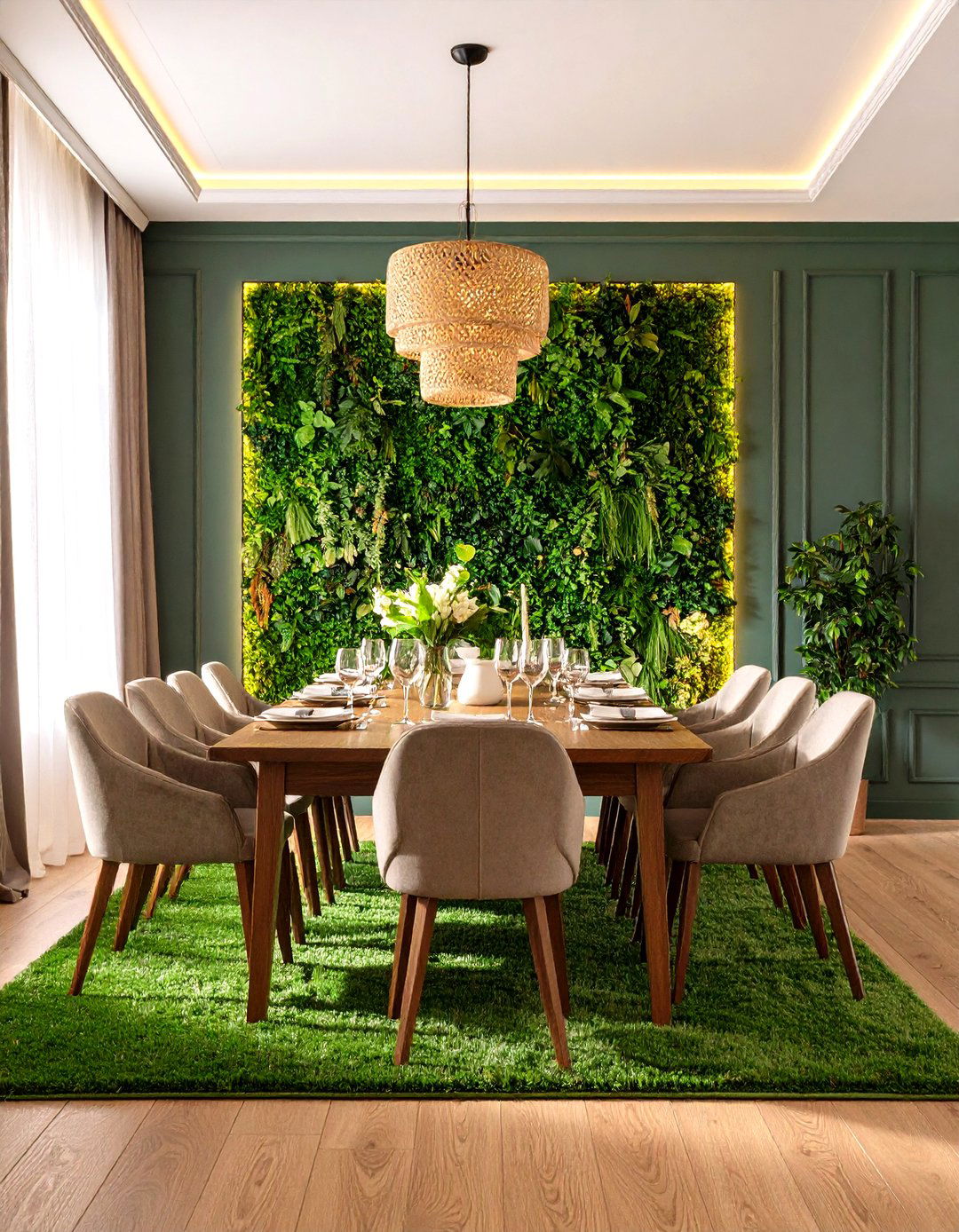
For dining rooms, designers sometimes swap solid wood infill for grasscloth or linen panels, framed by raised molding, to introduce texture at a human scale. The durable half wall paneling keeps chairs from marring wallpaper while the natural fiber lends warmth and subtle color shifts. The Spruce Seal natural wallcovering with clear matte varnish to resist stains, and install discreet uplights so evening dinners showcase the weave.
16. Entryway Bench-Back Half Wall Paneling
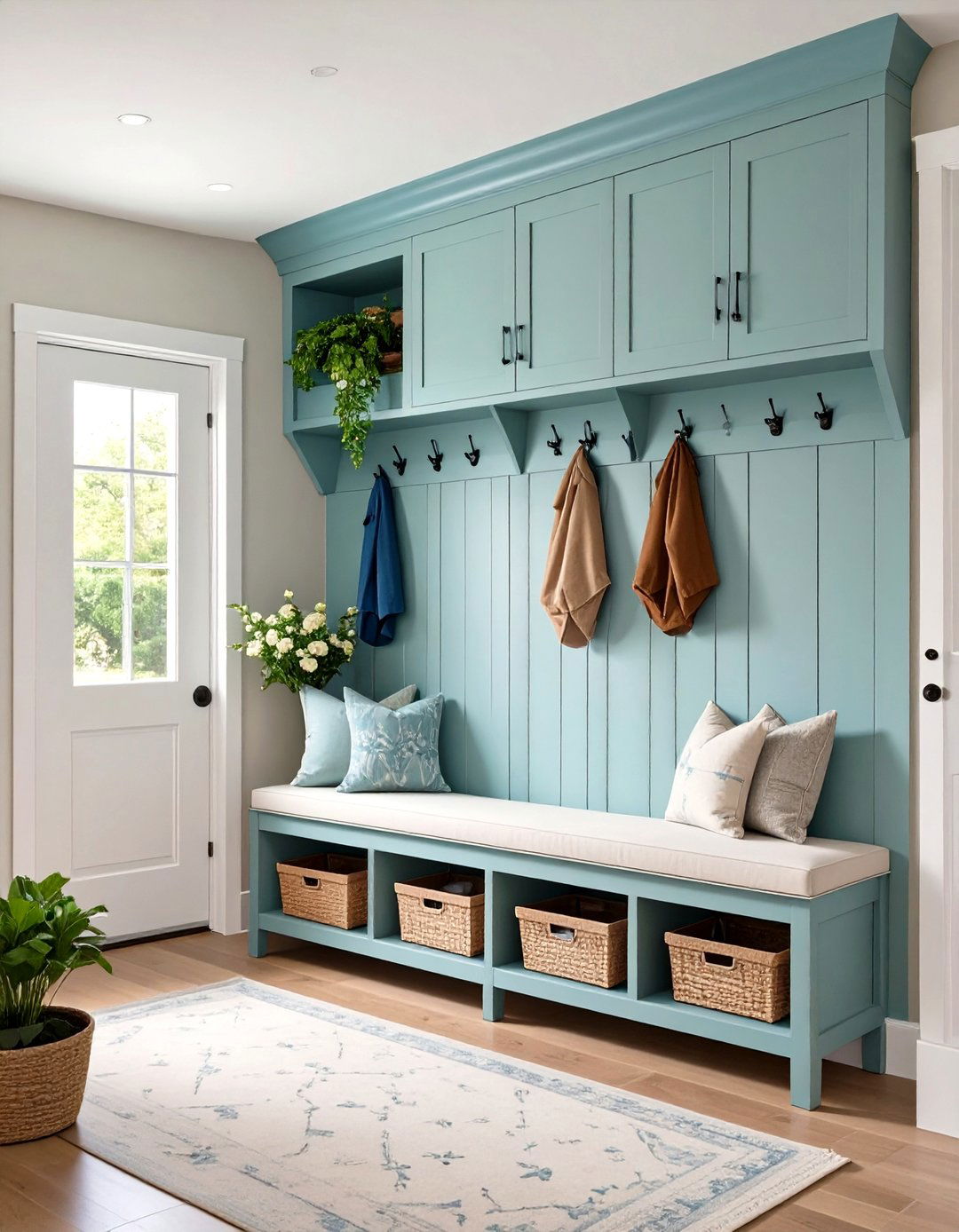
Board-and-batten half wall paneling behind a built-in bench instantly turns a narrow hall into a mudroom substitute. Inspiration galleries show cubbies, hooks, and even flip-up bench lids integrated into the panel grid for hidden shoe storage. Pinterest The Panel Hub Because most treatments stop at about 44 inches, tall guests still have back support without rubbing heads on overhead cabinets. Paint everything a light-reflective neutral so the tight space feels open, then add baskets that match the panel color for visual calm.
17. Shiplap Half Wall Paneling as a Kitchen Backsplash

Horizontal shiplap clad in wipe-able satin enamel takes the place of tile behind counters in rustic or coastal kitchens. Designers often paint shiplap a contrasting charcoal to highlight marble or butcher-block counters above. The Spruce Seal seams with paintable caulk to block crumbs, and top with a narrow shelf for spices or art. This budget-friendly move saves handling tiny tile cuts around outlets while still offering texture and water resistance.
18. Powder Room Personality with Half Wall Paneling
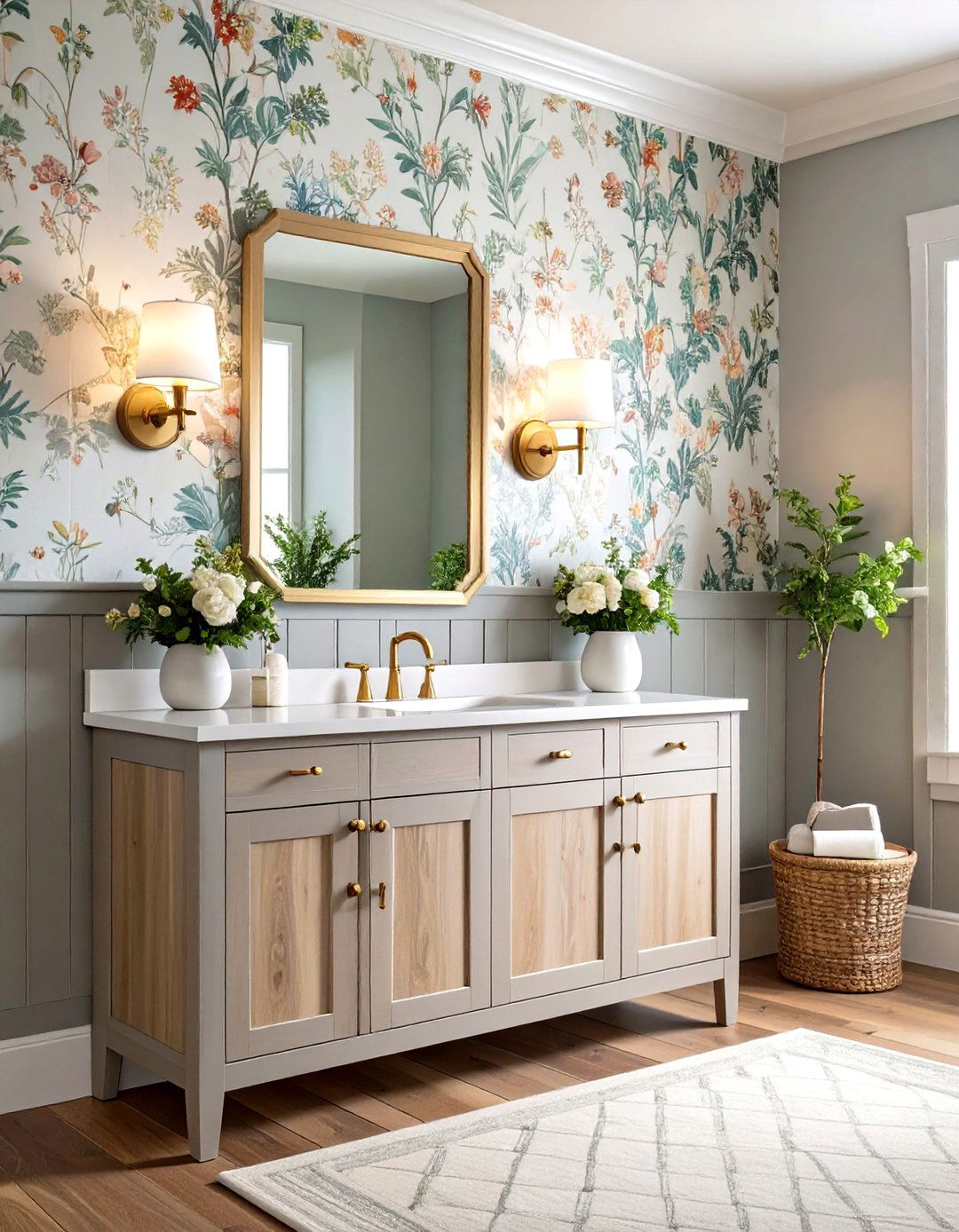
Small powder rooms shine when half wall paneling in soft gray or navy is paired with whimsical wallpaper—think chinoiserie cranes or woodland scenes—above. The panel guards against splashes from pedestal sinks while preventing busy prints from overpowering the compact space. The Spruce A brass mirror centered on the paint-wallpaper break feels balanced, and sconces mounted into the solid wood find extra grip compared with drywall alone.
19. Hidden Storage Half Wall Paneling for Clutter-Free Mudrooms
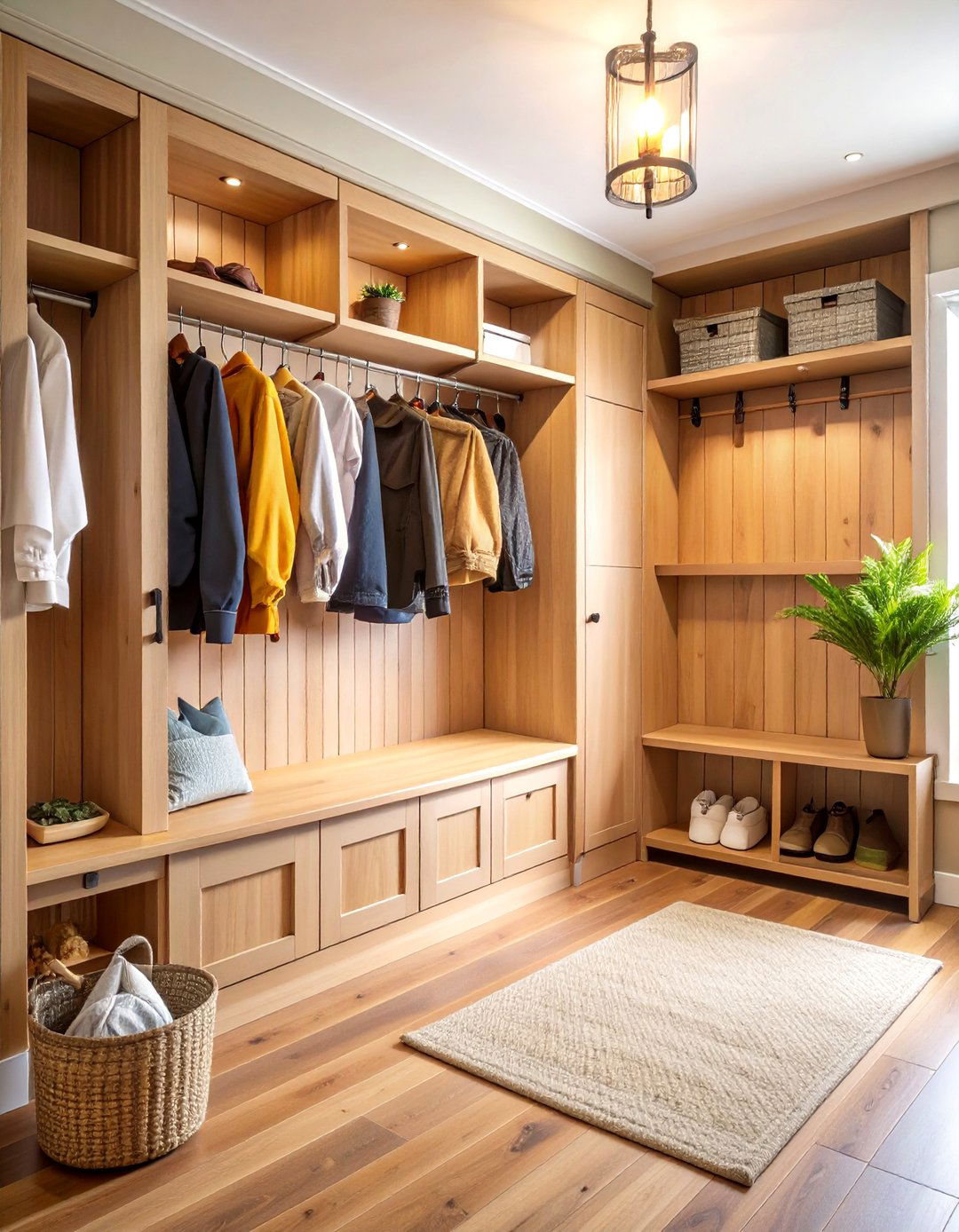
Clever carpenters turn half wall paneling into flip-down doors and touch-latch panels that hide phone chargers, dog leashes, or seasonal shoes. Mudroom examples pair durable board-and-batten fronts with lift-up bench seating for double duty. The Panel Hub Keeping storage at chair-rail height makes daily access easy and avoids bending. Finish interiors with cedar planks for a fresh scent and natural pest resistance.
20. Kid-Proof Half Wall Paneling for Playful Bedrooms
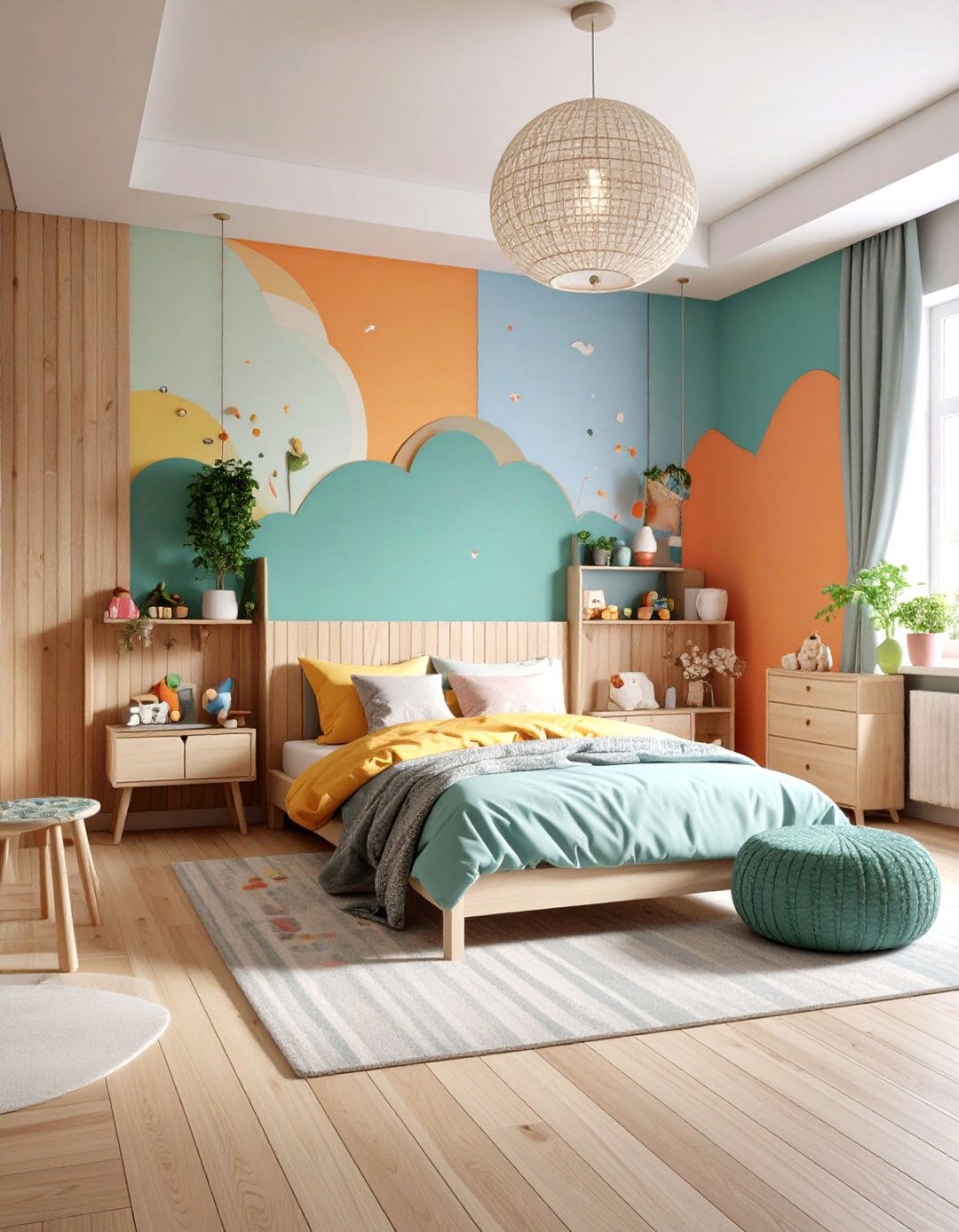
Finally, children’s rooms benefit from half wall paneling finished in scrub-able satin paint so markers and scuffs wipe off. Designers suggest capping panels at 48 inches—just above a child’s reach—to protect drywall during play while leaving room for murals or glow-in-the-dark stars overhead. The Panel Hub Rounded edge trim and non-VOC paints keep the installation safe. Choose adventurous colors—maybe fire-engine red battens under a chalkboard-paint band—to encourage creativity without sacrificing long-term resale appeal.
Conclusion:
Half wall paneling succeeds because it balances practicality with polish: sturdy surfaces guard against daily wear while decorative profiles, bold colors, or tactile materials turn bland expanses into conversation pieces. Whether you favor cottage beadboard, sculptural flutes, industrial metal, or acoustically smart slats, the twenty ideas above prove there’s a half wall solution for every budget and style. Use these concepts as a menu—mix, match, and customize heights or finishes—so your own walls quietly work harder and look better for years to come.


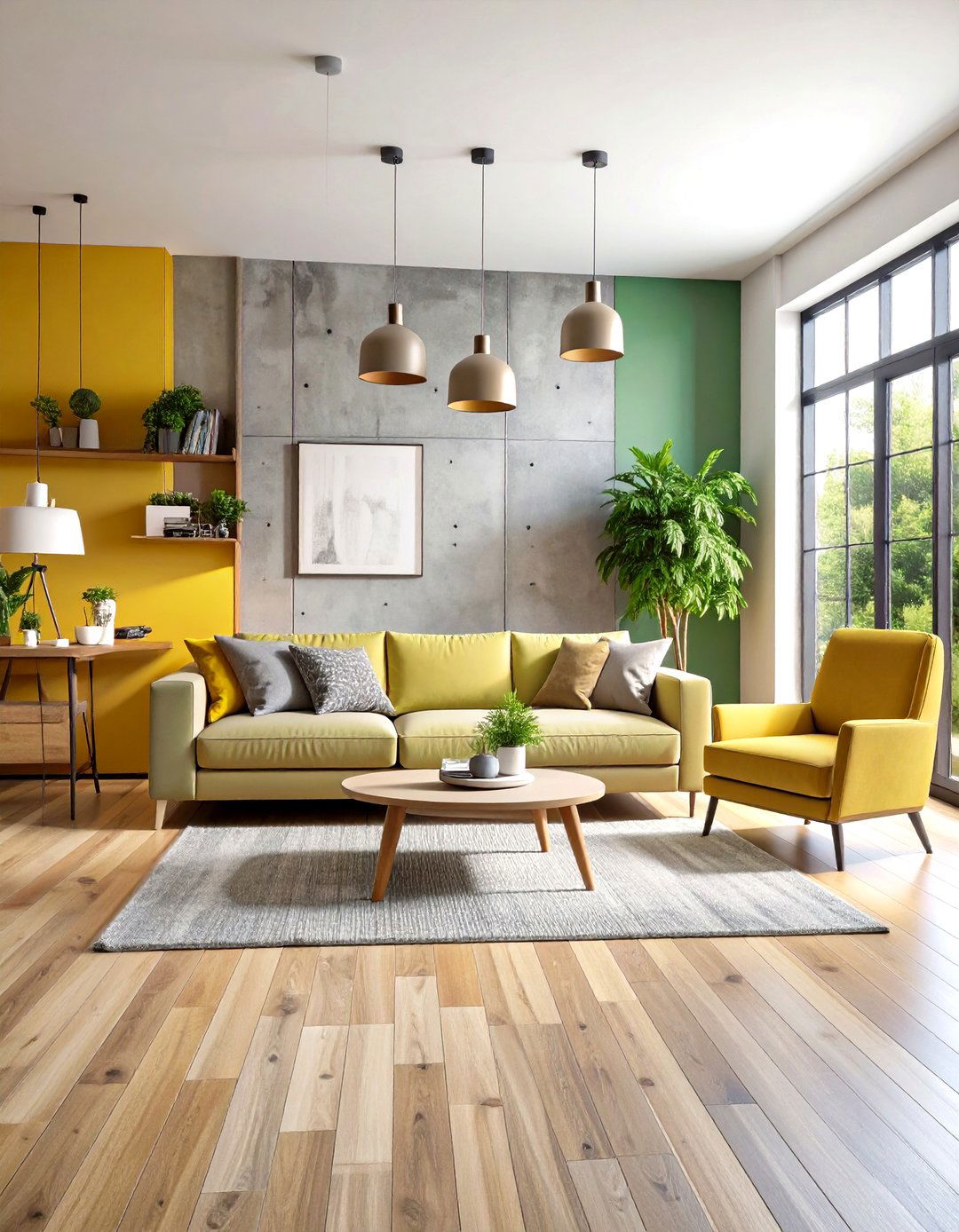


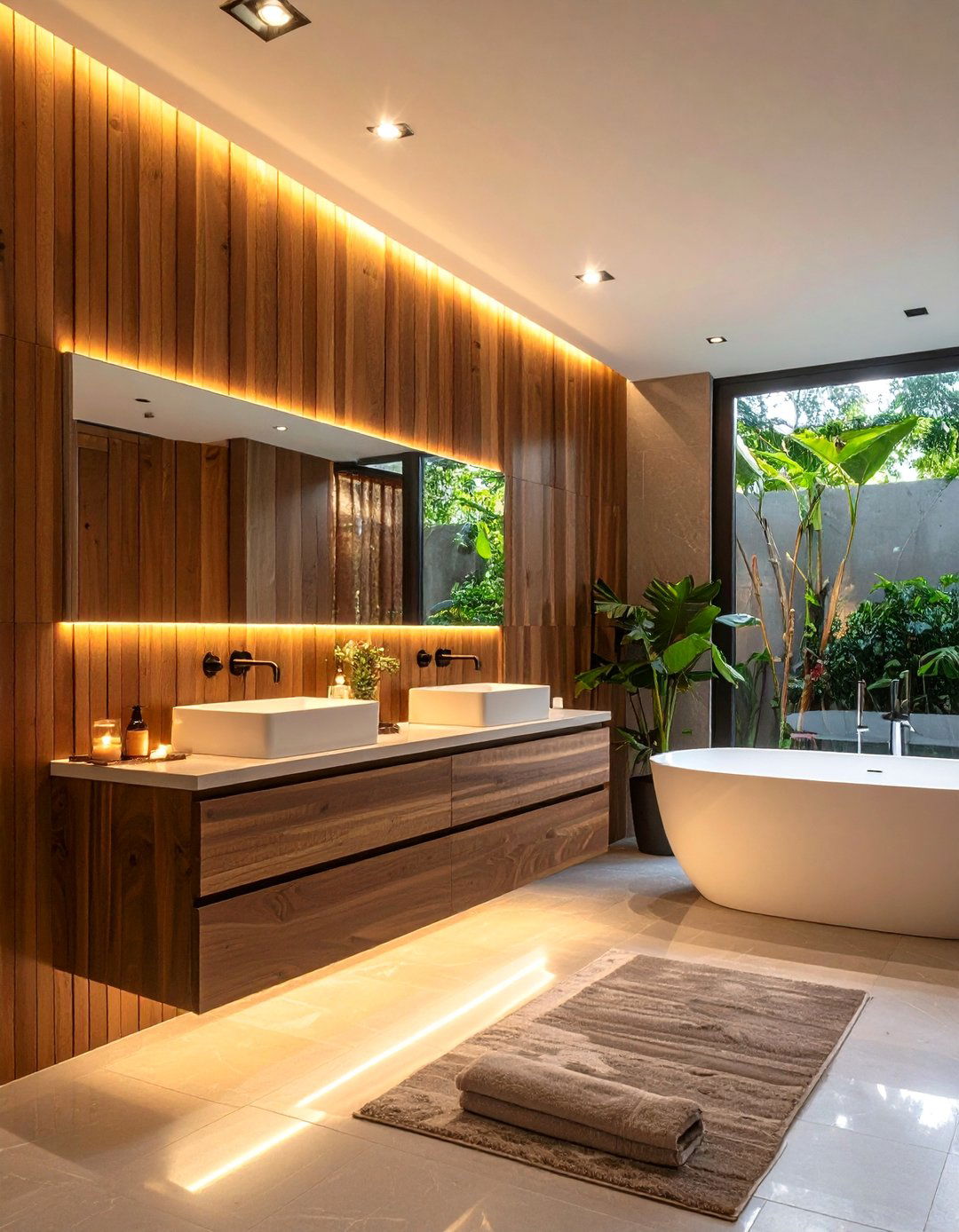

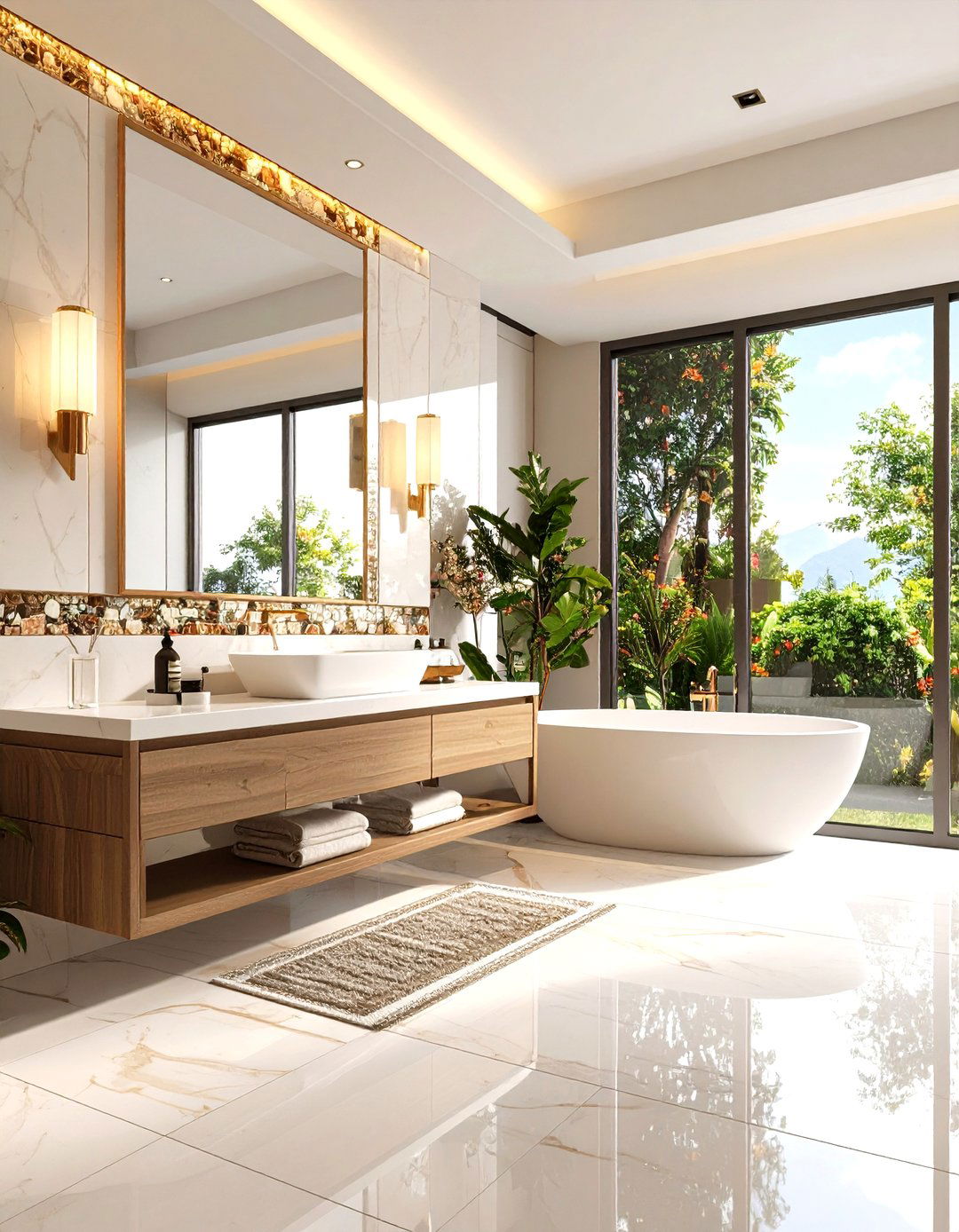
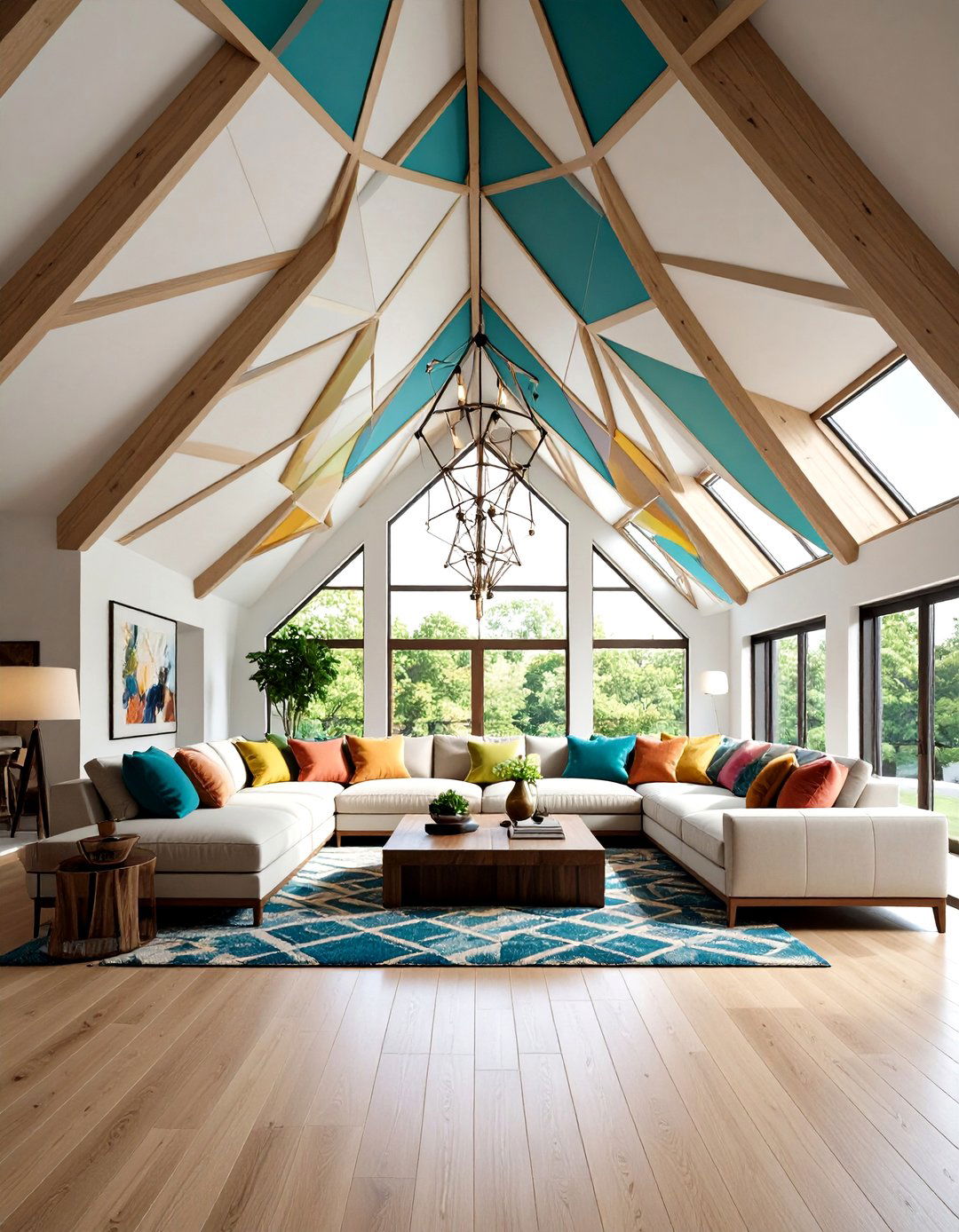
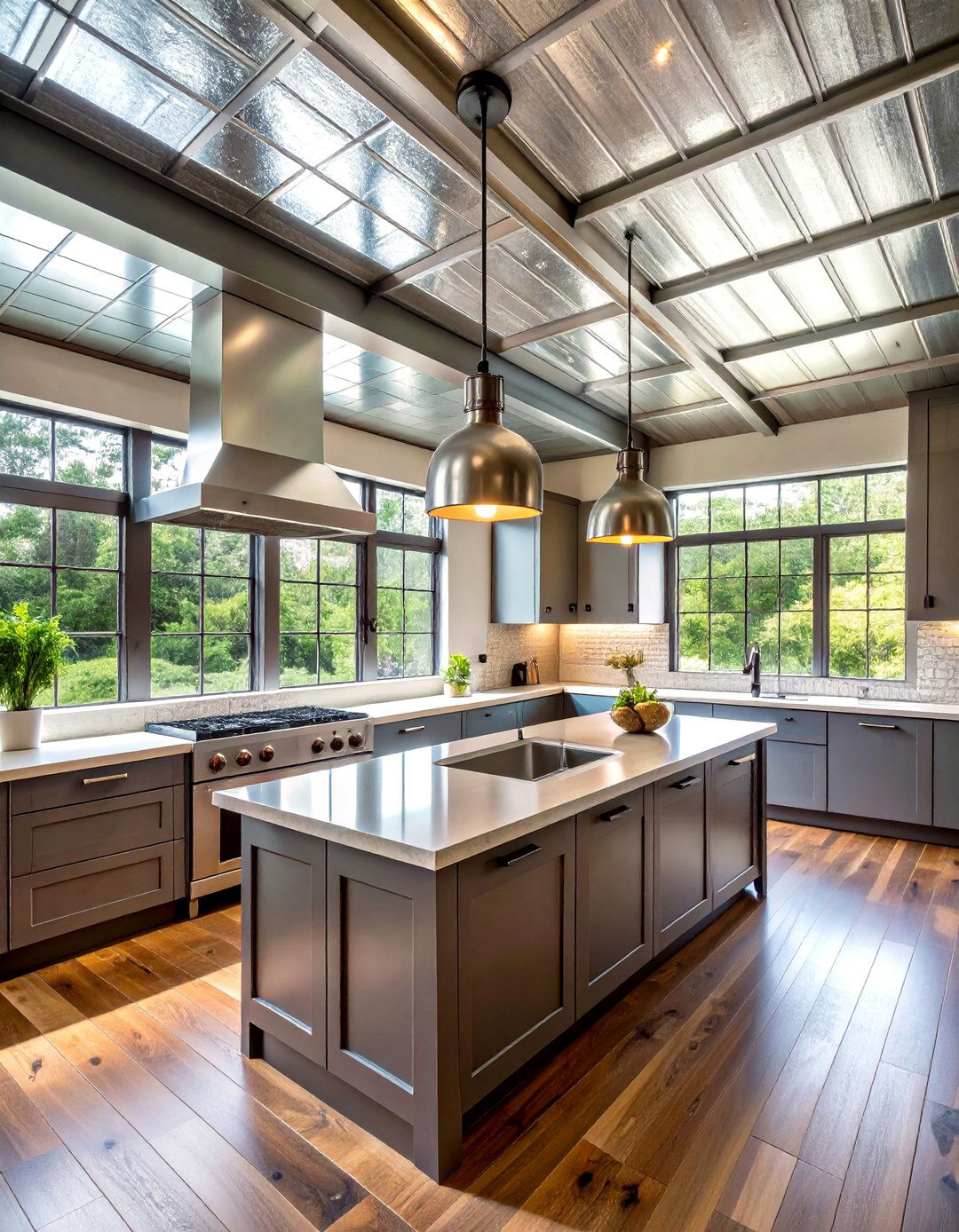
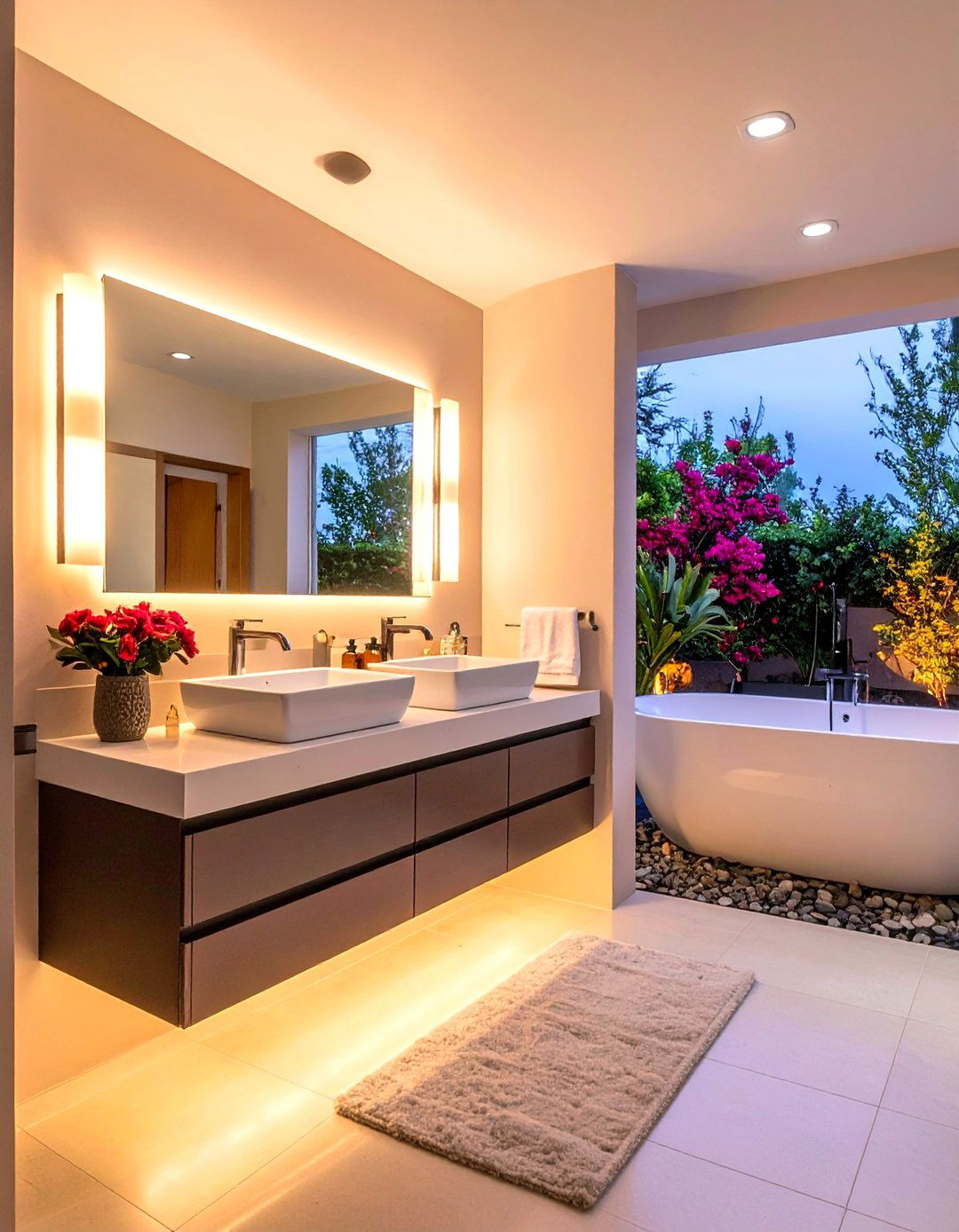
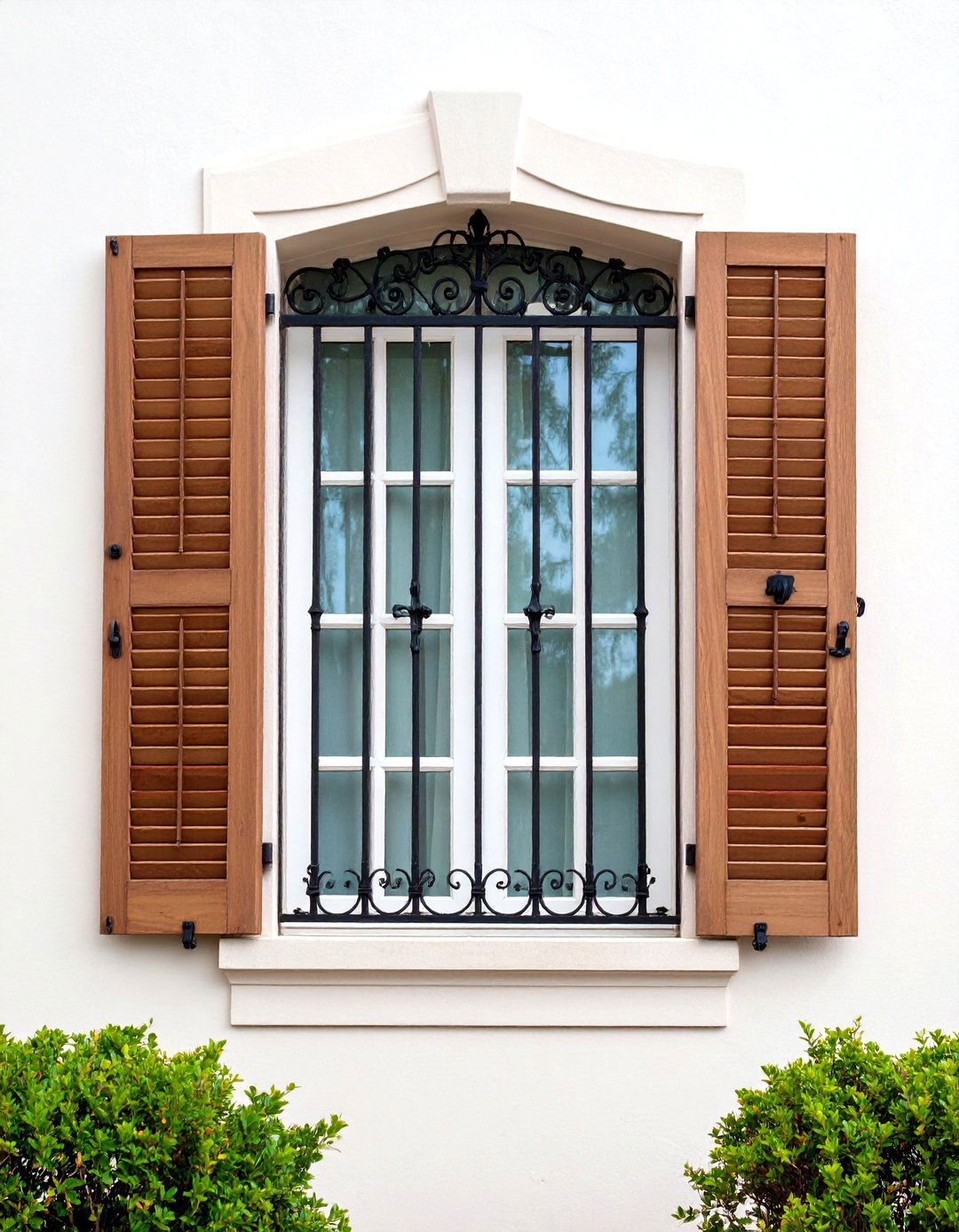
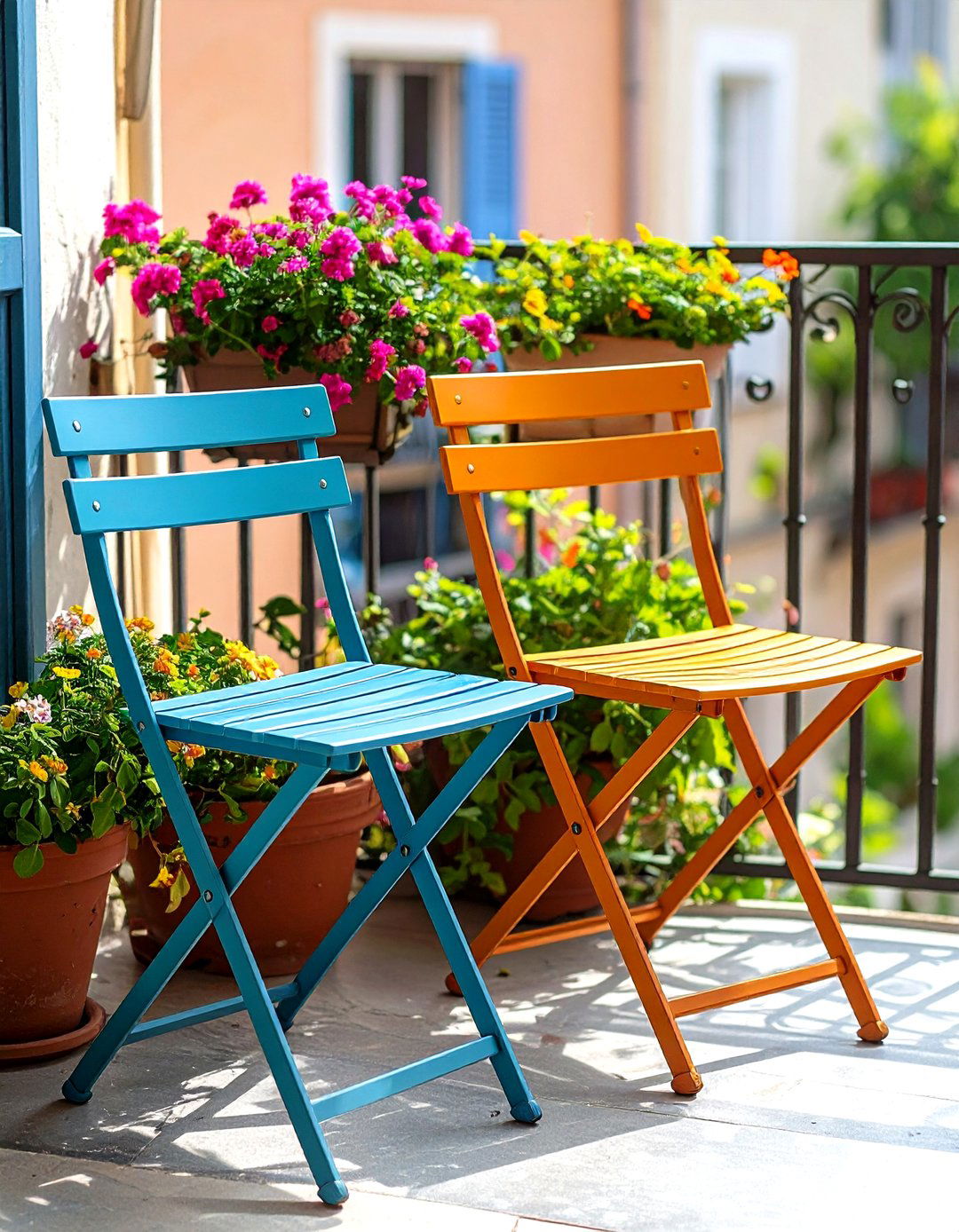
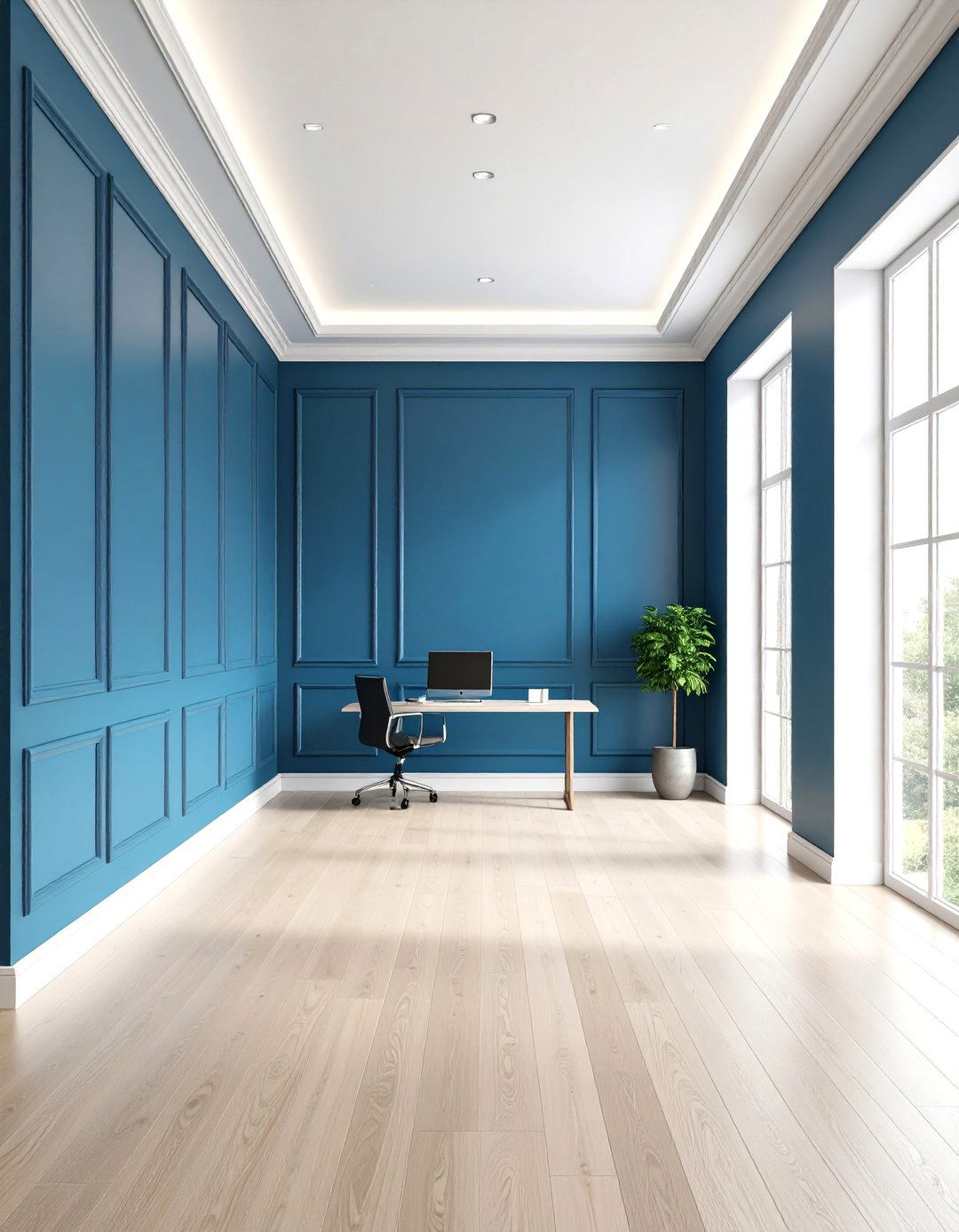
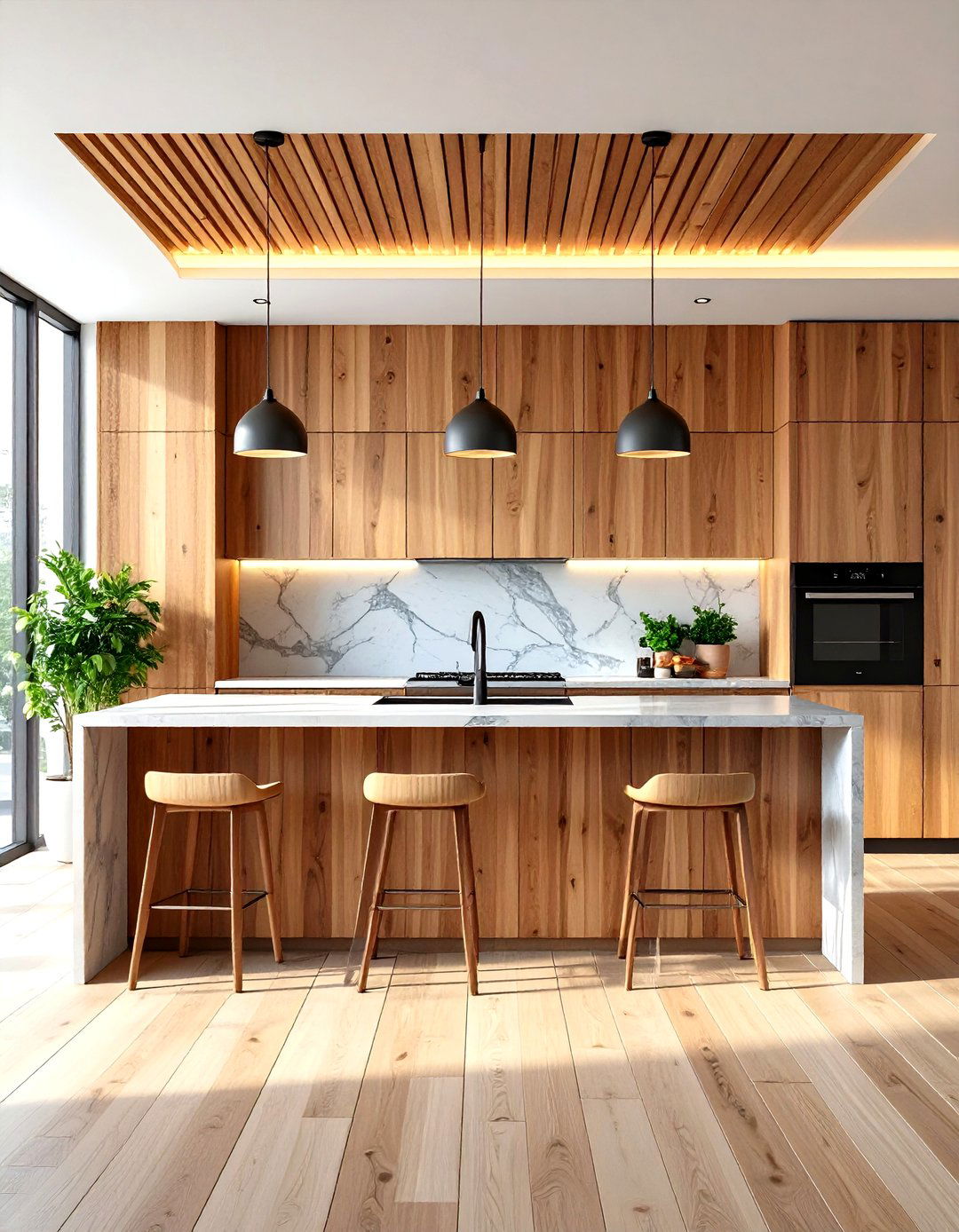

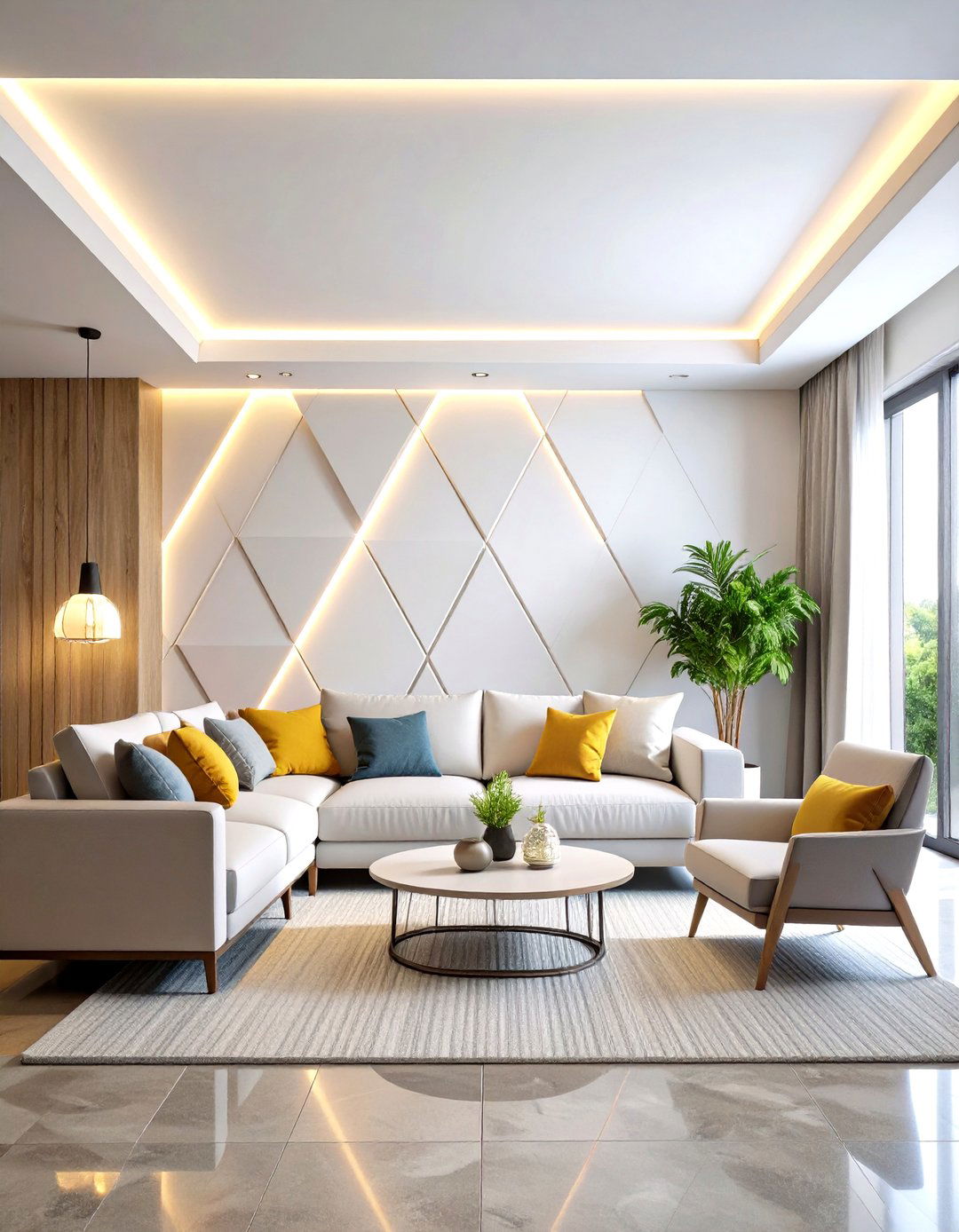
Leave a Reply